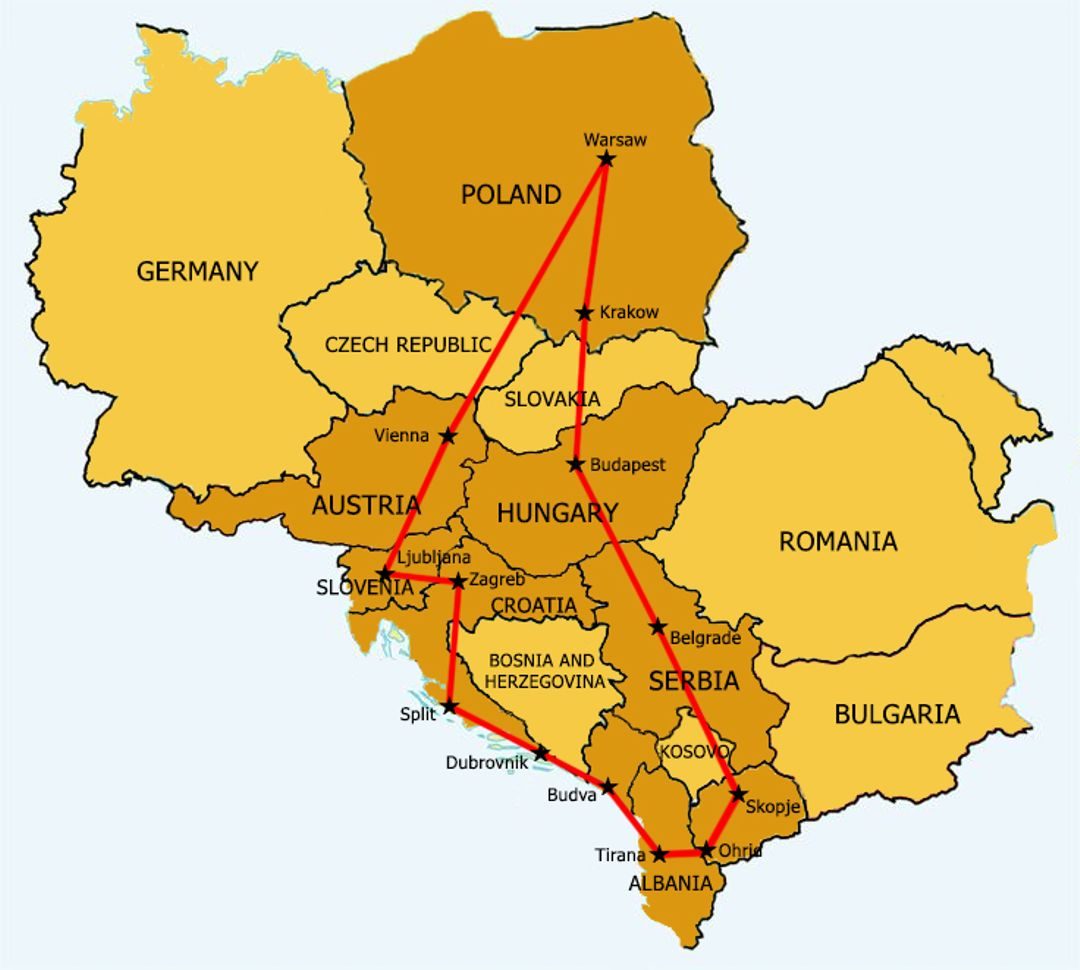
Your journey will start in Warsaw, The Polish capital, which was the last residence of the Polish royalty and the place where the 1944 uprising happened. Whether you are into history, classical music, contemporary art, or a fitness fan, Warsaw is bound to offer something you will enjoy.
The next destination you’ll visit will make you time travel through the former Habsburg Empire and overnight in one of Central Europe’s most exciting cities: Vienna. The cosmopolitan city of unique charm with its cultural events, imperial sights, coffee houses, cosy wine taverns, and the very special Viennese charm.
Further on this journey, you’ll have a glance at the emerald-green Ljubljanica River, which flows through the city’s heart, and walk in through the Ljubljana’s cobblestone streets.
While many descend on Croatia’s coastline directly, those in the know make their way to the country’s capital, Zagreb. It’s a place to meander through the streets of the center with its colorful attractions, to enjoy the cafe culture and pop into edgy and even quirky museums.
Just a few hours driving from Zagreb, you’ll wonder at Plitvice National Park, a place where waterfalls cascade down sheer cliffs connecting sixteen pristine lakes.
Medieval architecture, tranquil lakes and Croatian charm will delight you featuring Dubrovnik and the pearls of the stunning Dalmatian coast.
Step back into Roman times in Diocletian’s Palace, which comprises Split’s Old Town.
Than you’ll go along the Coast to explore the white stone buildings, winding alleys, and massive city walls of the ancient harbor town, Dubrovnik.
Budva will be your next Stop, known for its well preserved medieval walled city, sandy beaches and diverse nightlife.
On the Way to Tirana, you’ll have the Possibility to stroll through the local bazaar of Shkoder, get a glimpse of Albanian traditions. Having undergone a transformation of extraordinary proportions since awaking from its communist slumber in the early 1990s, Tirana‘s center is now unrecognizable, with buildings painted in primary colors, and public squares and pedestrianized streets that are a pleasure to wander.
A short stop in St.Naum Monastery, before reaching Ohrid, known as the Pearl of the Balkans. The uniqueness of Lake Ohrid and the city’s historical architecture has been attested by UNESCO, honoring it with an official designation as one of the few places on the cultural institution’s list “World Inheritance”.
Heading toward inland Peninsula, is planned a short stop is in Skopje, which apart from being the capital of the modern Republic of Macedonia, has always been a center of power yearned for by various empires. Situated on the banks of the River Vardar, a vital trade route is being founded by the Dardanians in the 3rd c. B.C known as “Skupi”, a much-prized city for its strategic location.
Next comes one of the oldest cities in Europe. Belgrade has so many secrets, but one of them hides inches below the surface. Literally. More than one hundred caves, canals, tunnels, passages tell the story of its connection to various empires and states that ruled here over the ages.
From there you’ll head toward the exotic Budapest – two cities rolled into one. Roman, Gothic and Turkish styles make this charm-filled city an architectural dream.
Your last overnight before returning to Warsaw will be in Krakow, famous for its rich history, world-class monuments, Wawel Dragon, and pretzels.
The return in Warsaw marks the end of this tour.
It’s time to fly back home!!
Traveling from Danube River to the Adriatic coastline, from spectacular Dubrovnik and mighty Budapest to Ohrid Lake you will have the unforgettable experience and see why this Cultural tour crossing 10 different countries: Poland, Austria, Slovenia, Croatia, Montenegro, Albania, Macedonia, Serbia, and Hungary, is par excellence.
WARSAW
The foundation of Warsaw on the place of previous settlements dates back to the 14th century. The new city became the capital of Mazovia in the early 15th century, which was later incorporated into Poland. Warsaw became the capital of the Polish Lithuanian Union in 1569, being also the seat of the Parliament. After a fire in Cracow the Royal Court moved to Warsaw as well. In the late next century, in a war with Sweden, Warsaw was attacked and destroyed, but regained it’s original status shortly after.
The development of Warsaw went on through the 19th century despite the partitioning of Poland, as the capital of territory belonging to Prussia.
After the First World War Warsaw became the capital of Poland once again. At the beginning of the Second World War the German siege and bombing destructed the city partly, the entire Jewish population was herded into the Warsaw Ghetto. When the liquidation began, the uprising of the Ghetto held out almost for a month. Nearing the end of the war the resistant Home Army tried to retake the capital, but the uprising was suppressed. After the war Warsaw was all but ruins.
The reconstruction of Warsaw began in 1945, many of the historic streets, buildings, and churches were restored to their original form, prefabricated houses were erected as well.
Now it is a bustling, thriving metropolis of busy shops, upmarket hotels, theaters, museums and art galleries, and regarded by many as the cultural capital of Eastern Europe.
Basic Facts
Country Name: Poland
City: Warsaw (capital)
City Population: 1.73 million
Also Known As: Phoenix City
It has seen rule by Prussia, France, Germany and Soviet Russia, and survived terrible destruction during the Second World War, when 85% of its buildings were razed to the ground.
The Royal Castle
This massive brick edifice, a copy of the original blown up by the Germans in
WWII, began life as a wooden stronghold of the dukes of Mazovia in the 14th century. Its heyday came in the mid-17th century, when it became one of Europe’s most splendid royal residences. It then served the Russian tsars and, in 1918, after Poland regained independence, became the residence of the president. Today it is filled with period furniture and works of art
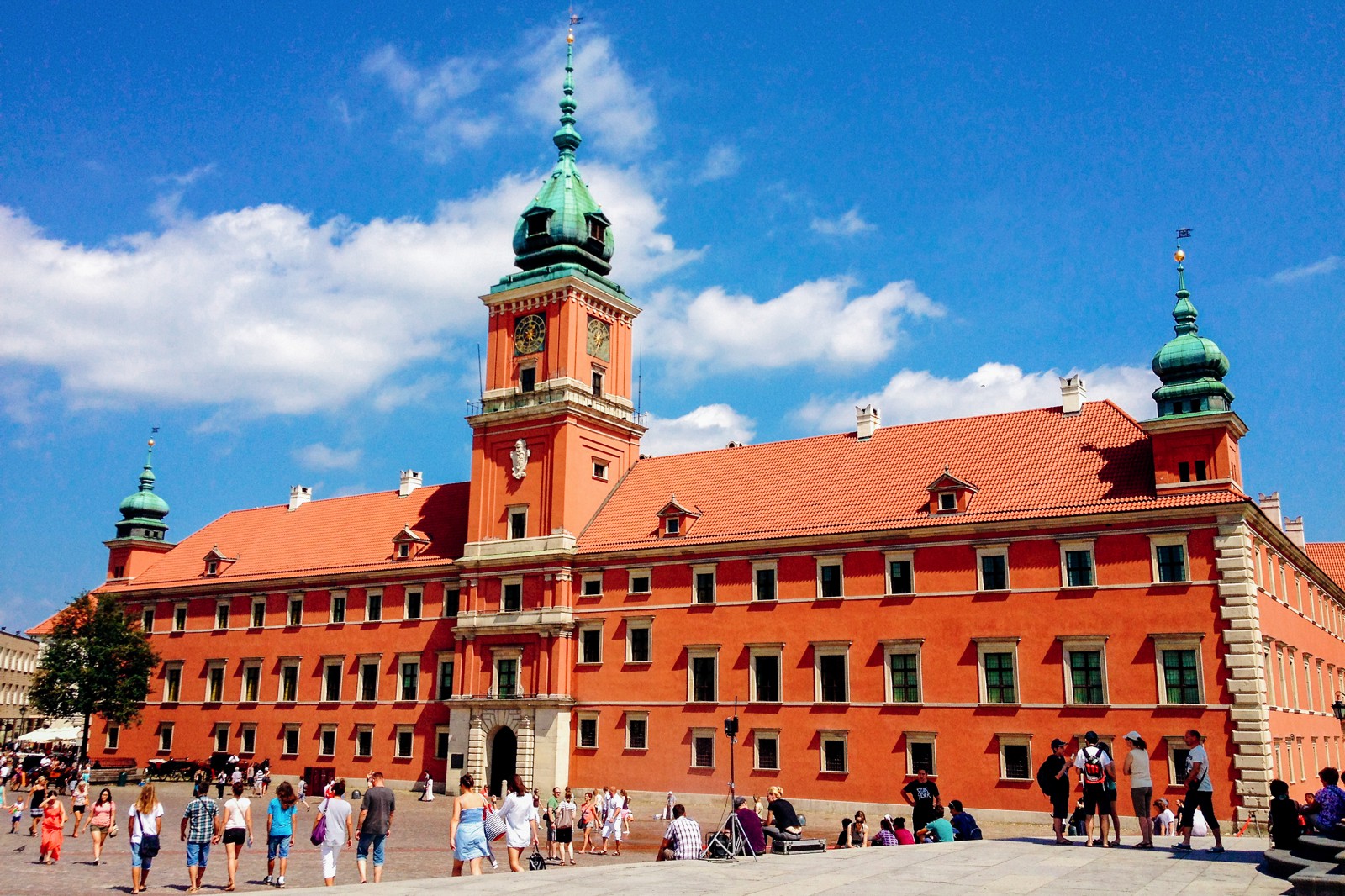
Warsaw’s Castle Square
Is a historic square in front of the Royal Castle – the former official residence of Polish monarchs. The Square (in a more or less triangular shape) features the landmark Sigismund’s Column to the south-west, and is surrounded by historic townhouses. It marks the beginning of the bustling Royal Route extending to the south.
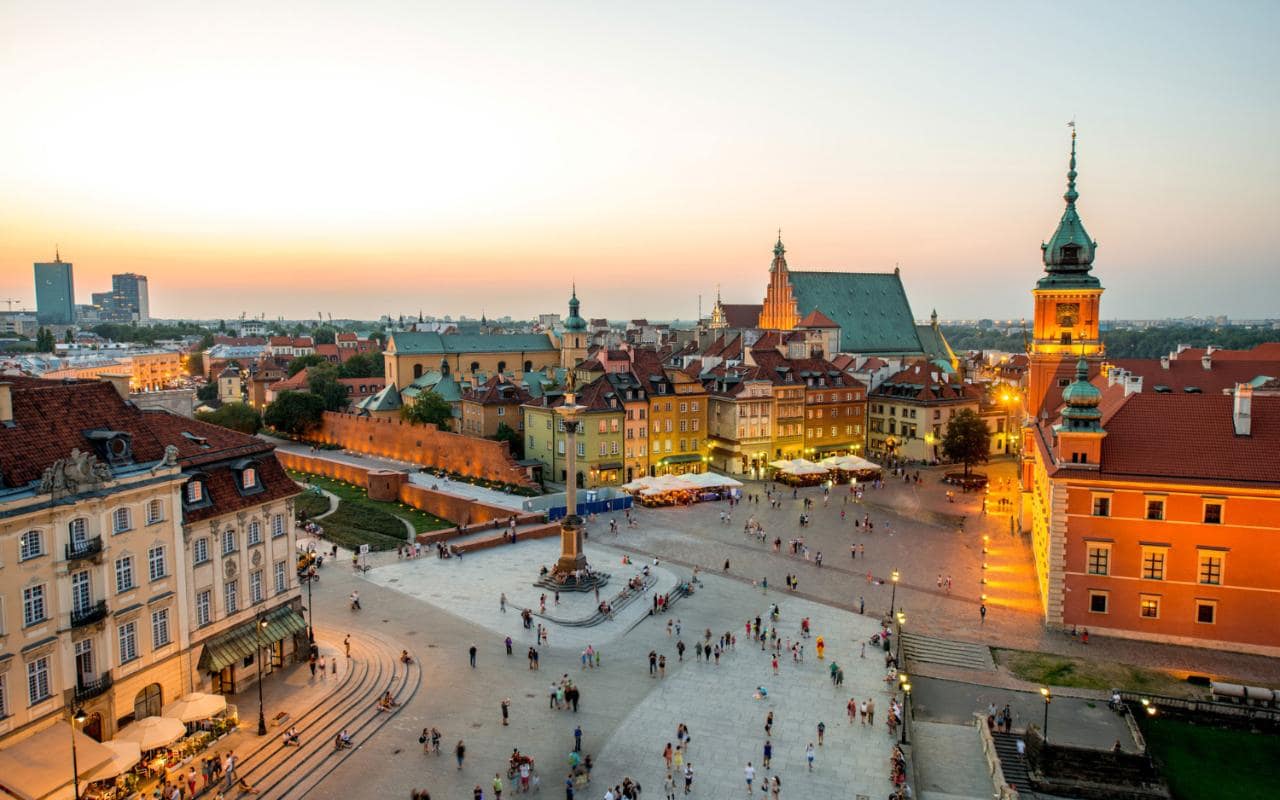
Old Town Square
At the centre of the partially walled Old Town (Stare Miasto), the Old Town Square is, for those with an eye for historic buildings, the loveliest square in Warsaw. It’s lined with tall houses exhibiting a fine blend of Renaissance, Baroque, Gothic and neoclassical elements; aside from the facades at Nos 34 and 36, all were reconstructed after destruction in WWII.
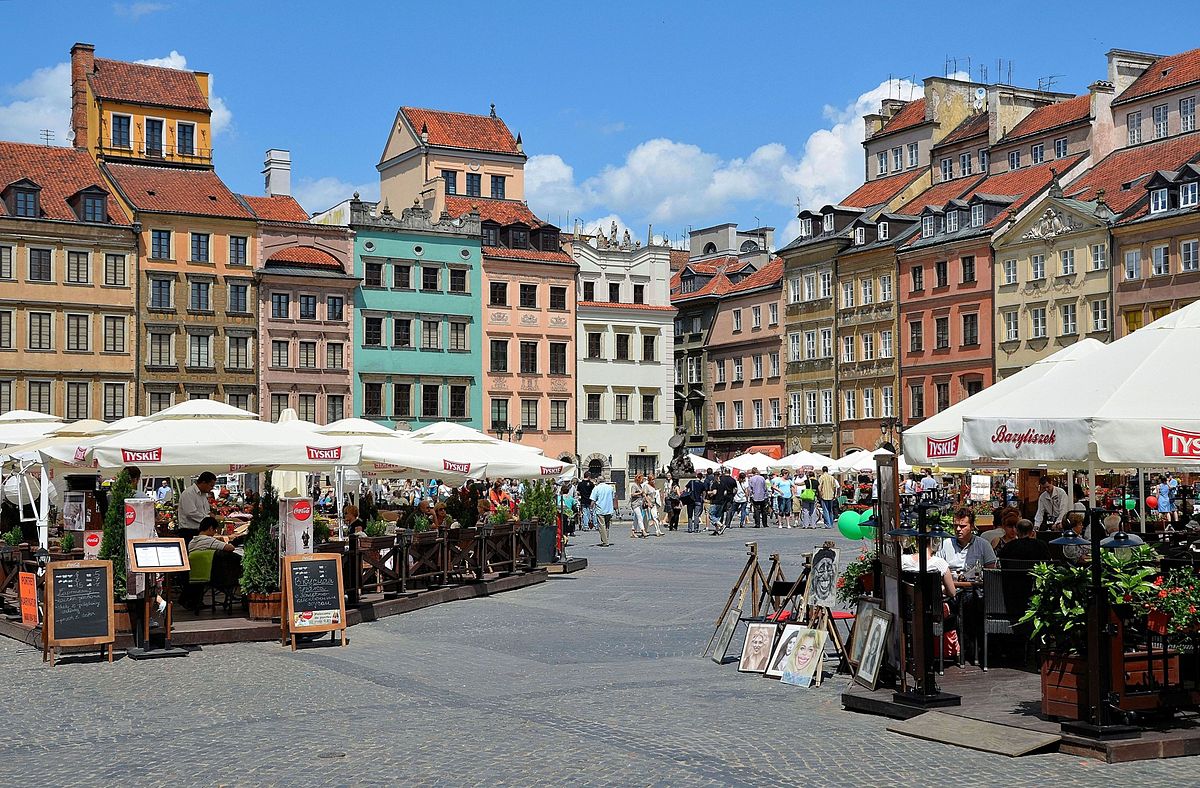
Wilanow
Warsaw’s very own Palace of Versailles is quite something. A fitting reward for walking the entire length of the Royal Route, this sprawling building remained virtually undamaged after WWII and is a glorious reminder of Poland’s regal history. Highlighting both Polish and European architectural styles, the Palace has a strange look to it. It was built for one of Poland’s most famous leaders, King Jan Sobieski III and inside and out, the walls are adorned with images of some of the King’s most famous military victories.
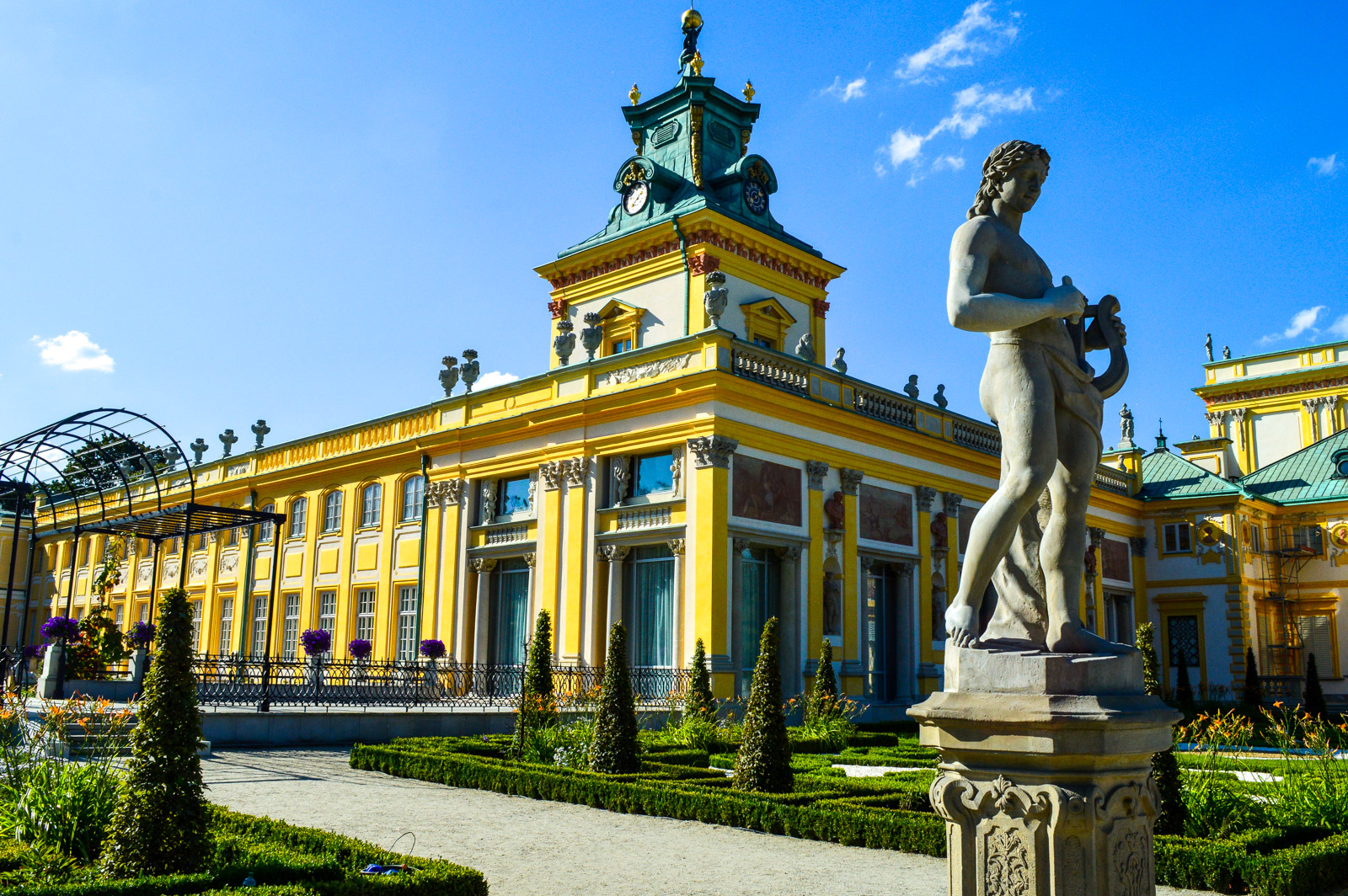
The Palace of Culture And Science
Constructed in 1955, the Palace of Culture and Science is a notable high-rise building in Warsaw, Poland. It is the center for various companies, public institutions and cultural activities such as concerts, cinemas, theaters, libraries, sports clubs, universities, scientific institutions and authorities of the Polish Academy of Sciences. Motivated by Polish historicism and American art deco high-rise buildings, the PKiN was designed by Soviet architect Lev Rudnev in “Seven Sisters” style and is informally referred to as the Eighth Sister.
The Palace of Culture and Science is the tallest building in Poland, the eighth-tallest building in the European Union and one of the tallest on the European continent. It is 237 metres (778 ft) tall, including the structural 43-metre-high (141 ft) spire.
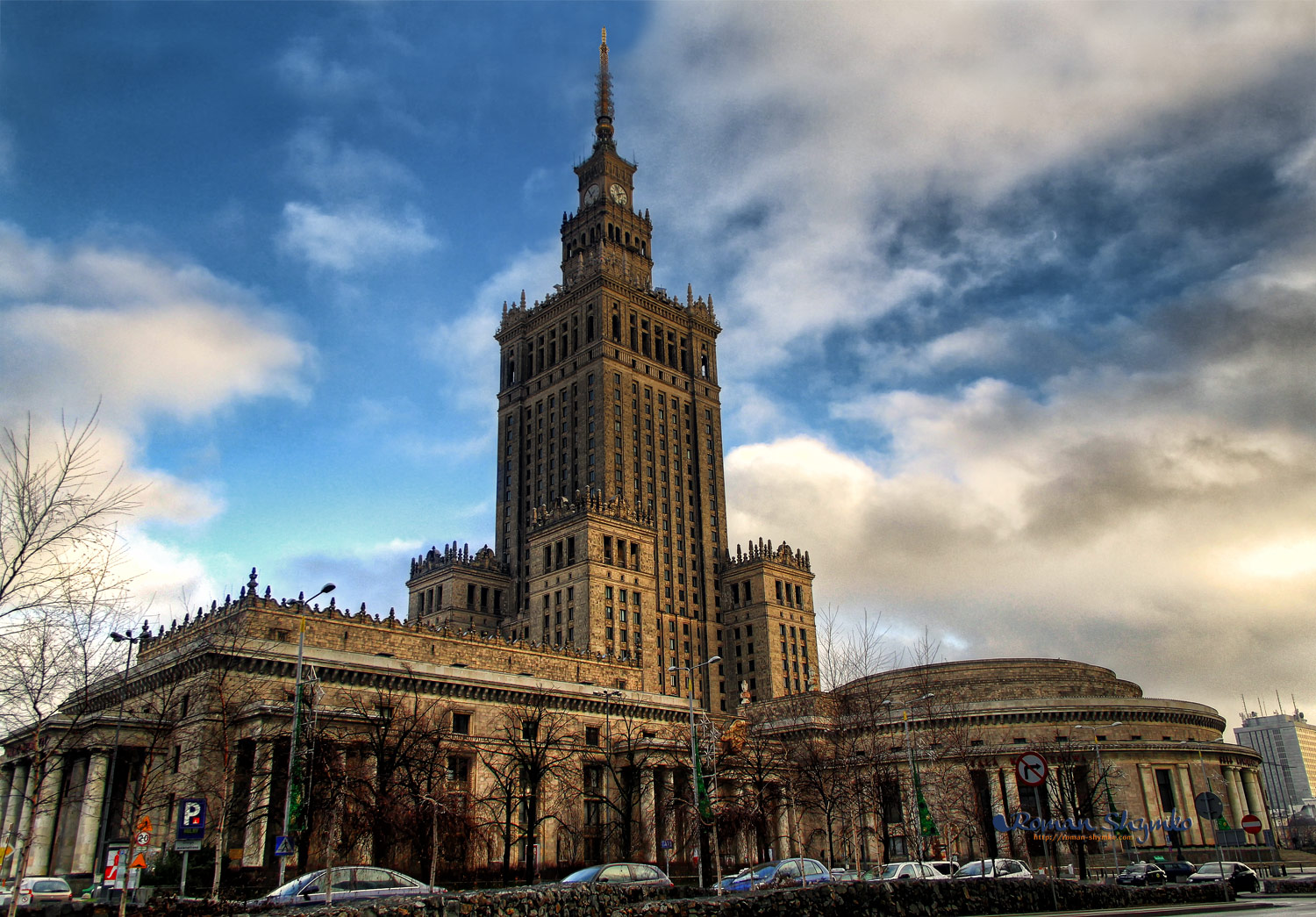
VIENNA
Vienna’s history dates back to around about the first century AD, when the Romans established the military camp Vindobona.
Today’s cityscape is characterised by the abundance of baroque buildings created mostly under the rule of Empress Maria Theresia and Emperor Franz Joseph, who was largely responsible for the monumental architecture round the Ringstraße.
Schönbrunn Palace, the former imperial summer residence, is one of Vienna’s most popular sights. The sumptuous palace with its beautifully tended formal gardens, the Gloriette monument, Palm House and zoo attracts hordes of visitors each year. Then there is the huge Hofburg (Imperial Palace), which was the base of the Habsburgs for over six centuries.
The splendid baroque Belvedere Palace today houses the Österreichische Galerie (Austrian Gallery), displaying the largest collection of works by Klimt and Kokoschka, as well as famous paintings by Schiele.
Vienna’s prime landmarks are the gothic Stephansdom, the giant big wheel in the Prater, and the Spanish Riding School with its famous Lipizzaner horses.
In the heart of Vienna, 200m from the State Opera, you’ll find a unique, tropical oasis – the Imperial Butterfly House. In one of the world’s most beautiful Art Noveau palm houses you can admire around 400 live, free flying butterflies all year round.
Vienna has many museums and galleries of international reputation such as the Museum of Fine Arts with the world’s largest collection of Bruegel paintings, MuseumsQuartier with the Leopold Museum, the Museum Moderner Kunst (Museum of Modern Art), Architekturzentrum (Architectural Center) and the Kunsthalle, all ranking among the city’s most important cultural venues.
The Vienna Philharmonic Orchestra is one of the world’s best, the State Opera amongst the leading opera houses, not to forget the famous Vienna Boys’ Choir. All of this, plus plenty of greenspace and recreational areas including the Wienerwald, the Prater and the Danube Island make Vienna a very special city to visit.
Basic Facts
Country Name: Austria
City: Vienna (capital)
City Population: 1.76 million
Also Known As: World’s Capital of Music
Vienna is often called The City of Music, or the World’s Capital of Music, as more famous composers have lived here than in any other city in the world. And 4 of the top 10 classical composers in history worked in Vienna between 1750 and 1825. Wolfgang Amadeus Mozart, Ludwig van Beethoven, Joseph Haydn, Franz Schubert, Johann Straus and Johannes Brahms are just a few who called Vienna home.
St. Stephen’s Cathedral
St. Stephen’s Cathedral (more commonly known by its German title: Stephansdom) is the mother church of the Roman Catholic Archdiocese of Vienna and the seat of the Archbishop of Vienna, Christoph Cardinal Schönborn, OP. The current Romanesque and Gothic form of the cathedral, seen today in the Stephansplatz, was largely initiated by Duke Rudolf IV (1339–1365) and stands on the ruins of two earlier churches, the first a parish church consecrated in 1147. The most important religious building in Vienna, St. Stephen’s Cathedral has borne witness to many important events in Habsburg and Austrian history and has, with its multicolored tile roof, become one of the city’s most recognizable symbols.
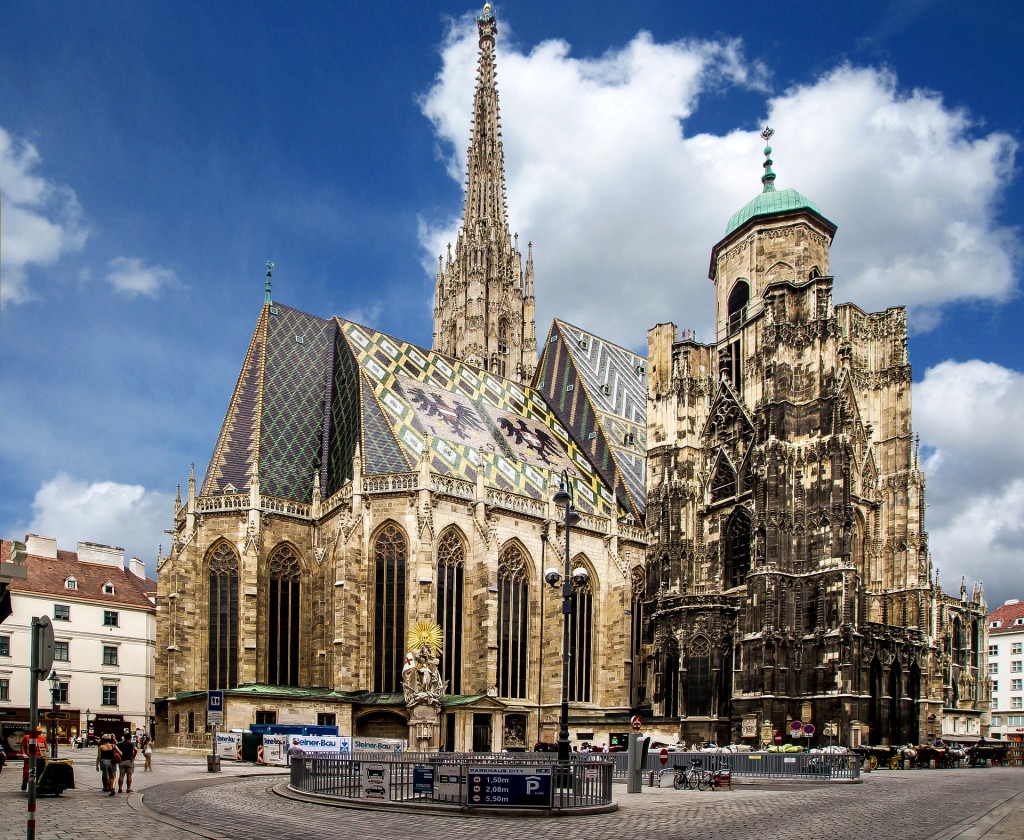
Schönbrunn Palace
Schönbrunn Palace is one of Europe’s most beautiful Baroque complexes and has been in the possession of the Habsburgs since 1569. The wife of Emperor Ferdinand II, Eleonore von Gonzaga, had a pleasure palace built on the site in 1642 and called the property “Schönbrunn” for the first time. The palace and garden complex created from 1696 onwards following the siege of Vienna was complete redesigned under Maria Theresa after 1743. Today, due to its historical significance, its unique layout and magnificent furnishings, the palace is a UNESCO World Heritage site.
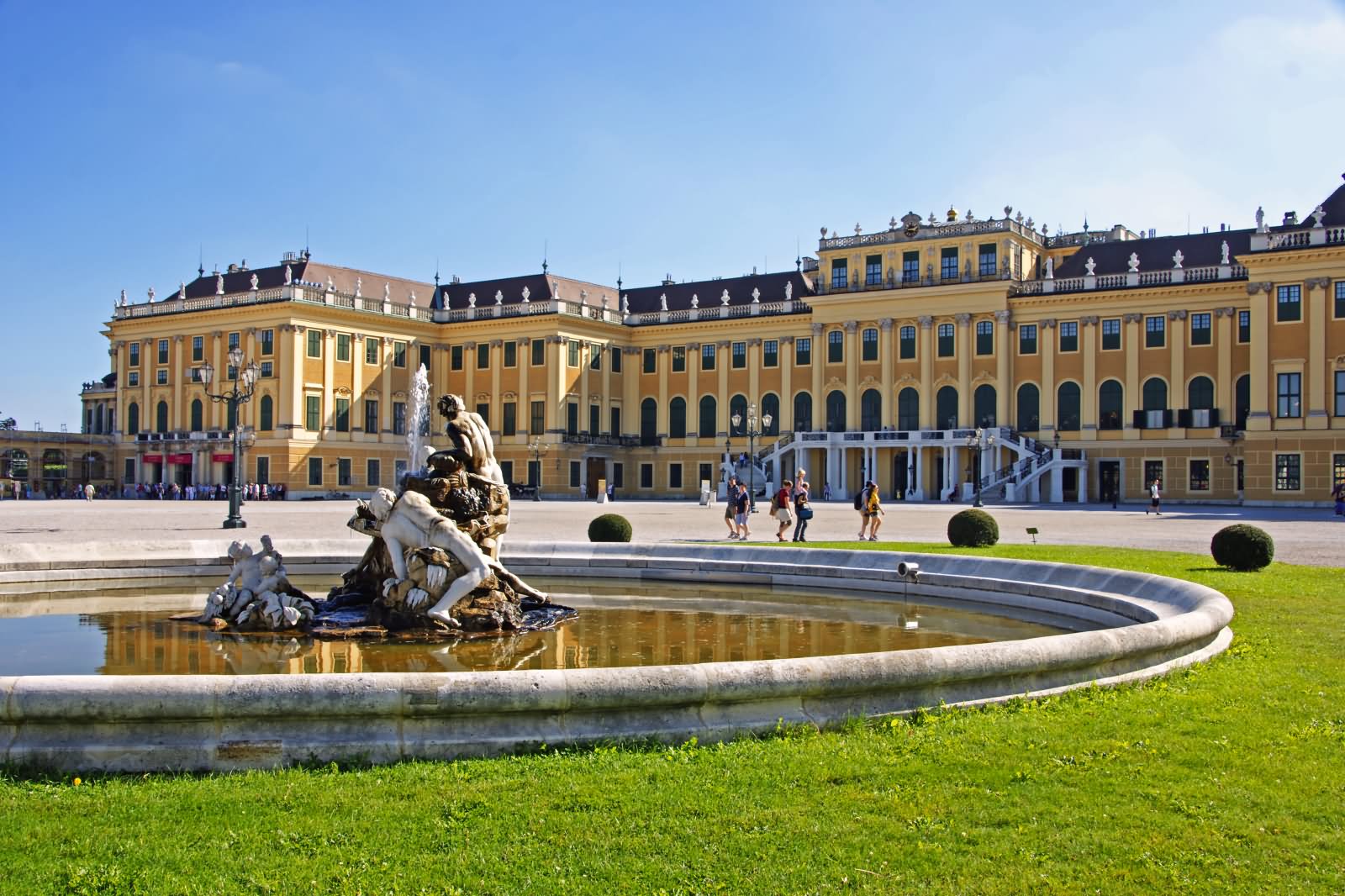
Hofburg – The Imperial Palace
The Hofburg is the former imperial palace in the centre of Vienna, Austria. Built in the 13th century and expanded in the centuries since, the palace has been the seat of power of the Habsburg dynasty rulers, and today the official residence and workplace of the President of Austria. It was the principal imperial winter residence, as Schönbrunn Palace was the summer residence.
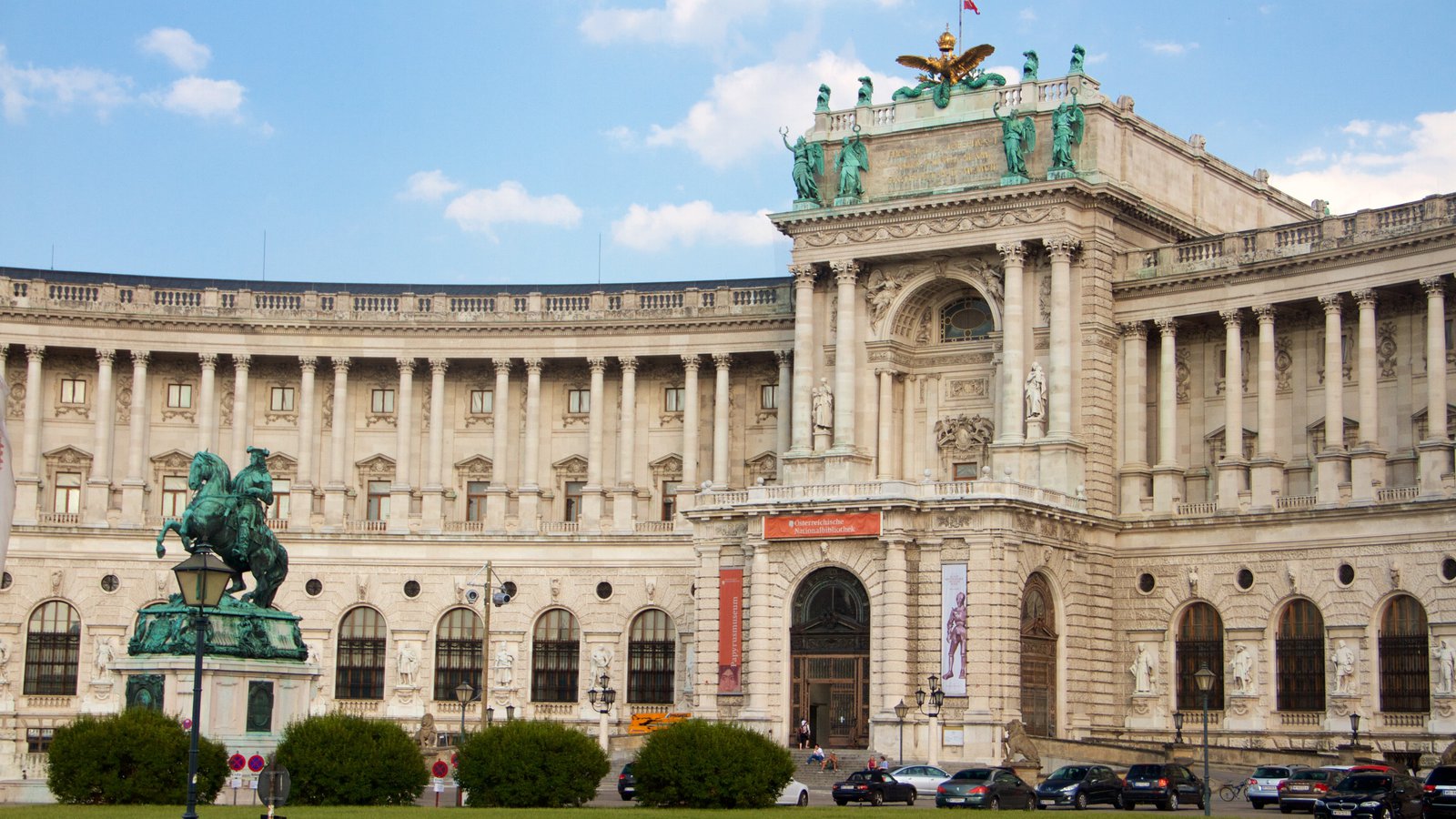
Ringstrasse
Vienna’s Ringstrasse is 5.3 kilometers long. Long enough to provide space for numerous monumental buildings, which were built during the period of Historicism in the 1860s to 1890s. Today, the buildings that stand there – from the Vienna State Opera to the Museum of Fine Arts – are among the most important sights in the city of Vienna.
Strolling along the Ringstrasse boulevard (clockwise) from Staatsoper (Vienna State Opera) to Rathaus (City Hall) is one of the best ways to understand what Vienna’s status was before the fall of the empire in 1918. It reflects Vienna’s position, back then, as one of the biggest and most important capitals in the world.
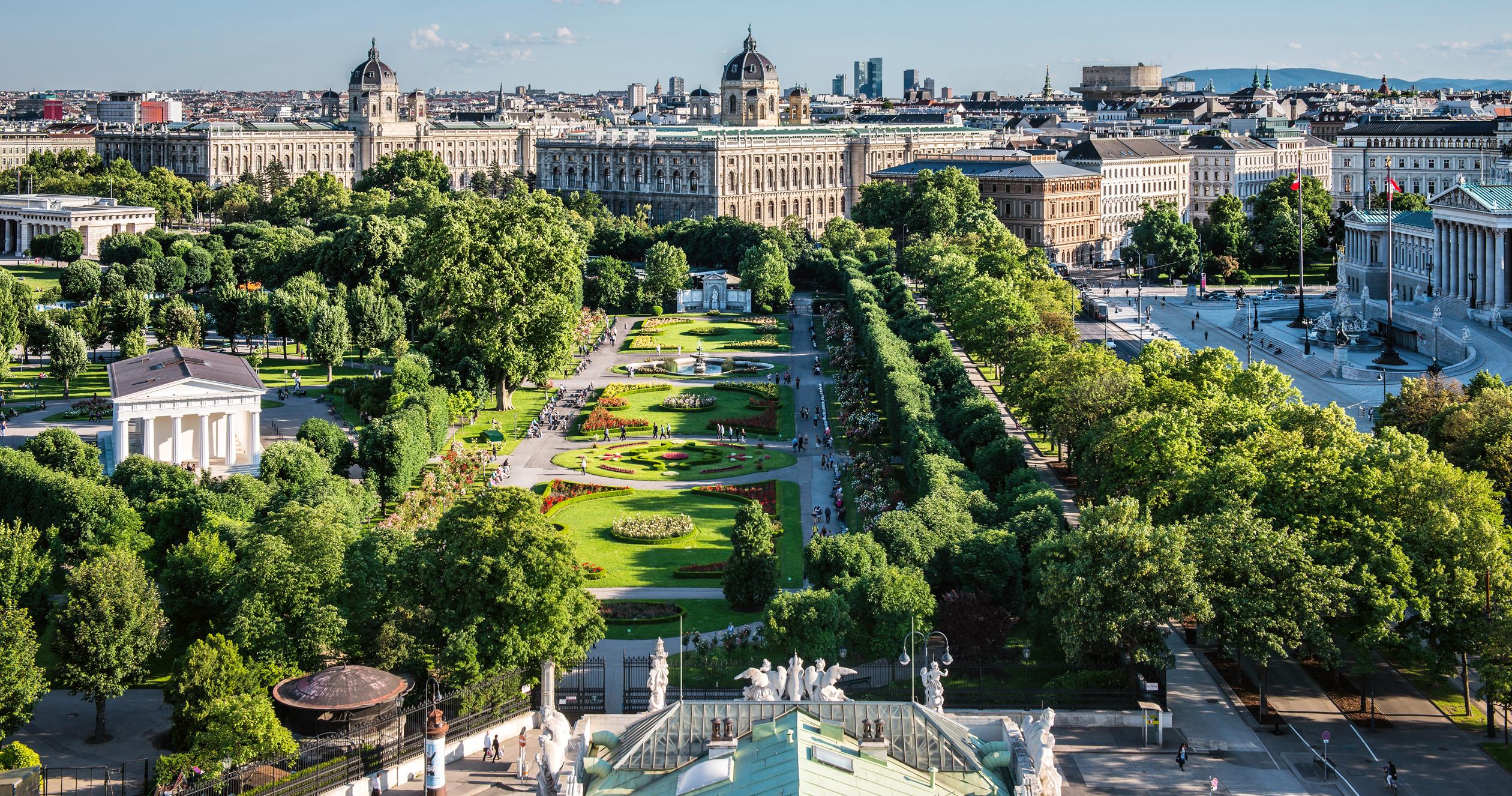
LJUBLJANA
The development of Ljubljana dates back to Roman times, where the fortified Roman settlement of Emona lay on the area of today’s Ljubljana. After Emona was destroyed by Huns, Slavs has arrived and built a town under the present castle hill, that developed into medieval Ljubljana (known as Laibach).
Today Ljubljana is one of the most charming cities in all of Europe.
Ljubljana’s Old Town is filled with churches and buildings dating all the way back to medieval times. The old world charm continues in Ljubljana Castle, whose tower provides a magnificent view of the city. At the city center lies Prešeren Square, which features the famous statue of Slovene national poet France Prešeren. Right off of the square is Cop Street, one of the main shopping streets in the city.
For history buffs, the Square of the Republic and the Roman ruins are a must, as well as the turn of the century Dragon Bridge. Subculture thrives in Metelkova, a section of the city autonomously declared as an alternative gathering place for artists and other youths, and is replete with bars and nightlife.
For the young at heart, Ljubljana Zoo and the Water City of Atlantis Water Park, as well as Tivoli Park. Museums of all kinds are the main attractions of the city, including the Architecture Museum, the Museum of Modern Art, the National Gallery, the National Museum, the Slovenian Museum of Natural History, and many more.
Basic Facts
Country Name: Slovenia
City: Ljubljana (capital)
City Population: 280.607
Location: Ljubljana is in the center of Slovenia. There are four main roads in Slovenia that form a cross across the country and Ljubljana is where they meet in the middle.
Most famous for: Dragon Symbol The Ljubljana dragon is the symbol of the city and you’ll find dragons on Dragon Bridge and on the coat of arms in the castle. It represents power, courage and greatness.
Franciscan Church of the Annunciation
The Franciscan church, built by the Augustinians, is today one of the main symbols of the city due to its location in the central Preseren Square and its striking colour. Its triple staircase which faces the Square has been a popular spot to street artists, local seniors and anyone who likes to catch the feeling of the city, having as it does a great view of the Triple Bridge, the square and the locals strolling by.
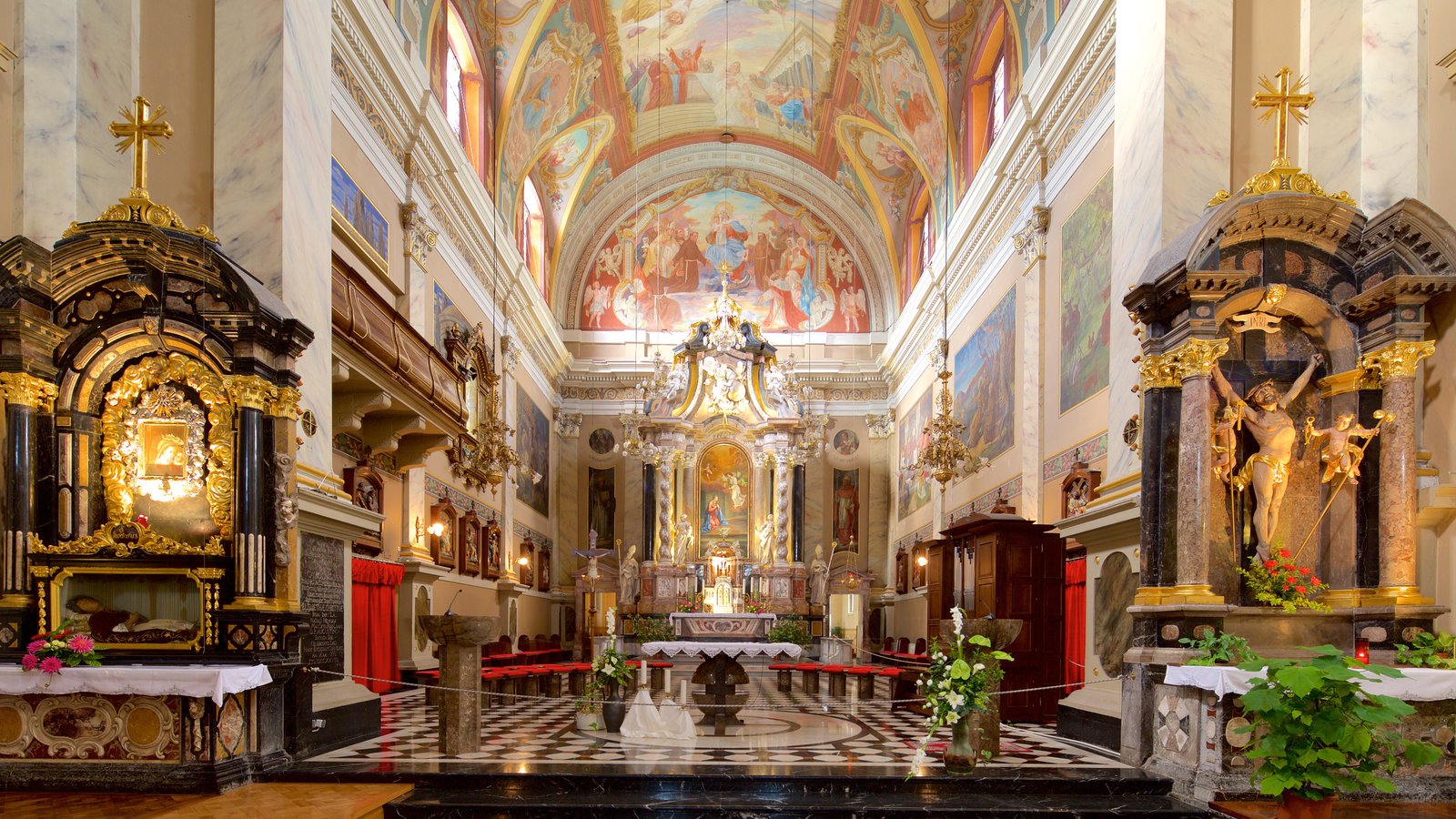
Preseren Square
It is the main square of Ljubljana, dedicated to the greatest Slovenian poet, Dr. France Preseren. His statue stands in the middle of the square and is surrounded by the finest secession buildings from the start of the 20th century. Connected by Plecnik’s Triple Bridge with the Old Town, Market and the river, it is the perfect spot to start your city exploration. Sitting on the statue stairs is a good way to meet locals, as it is a popular spot for a chit-chat where you can enjoy the sun, listen to street musicians and watch the locals stroll by.
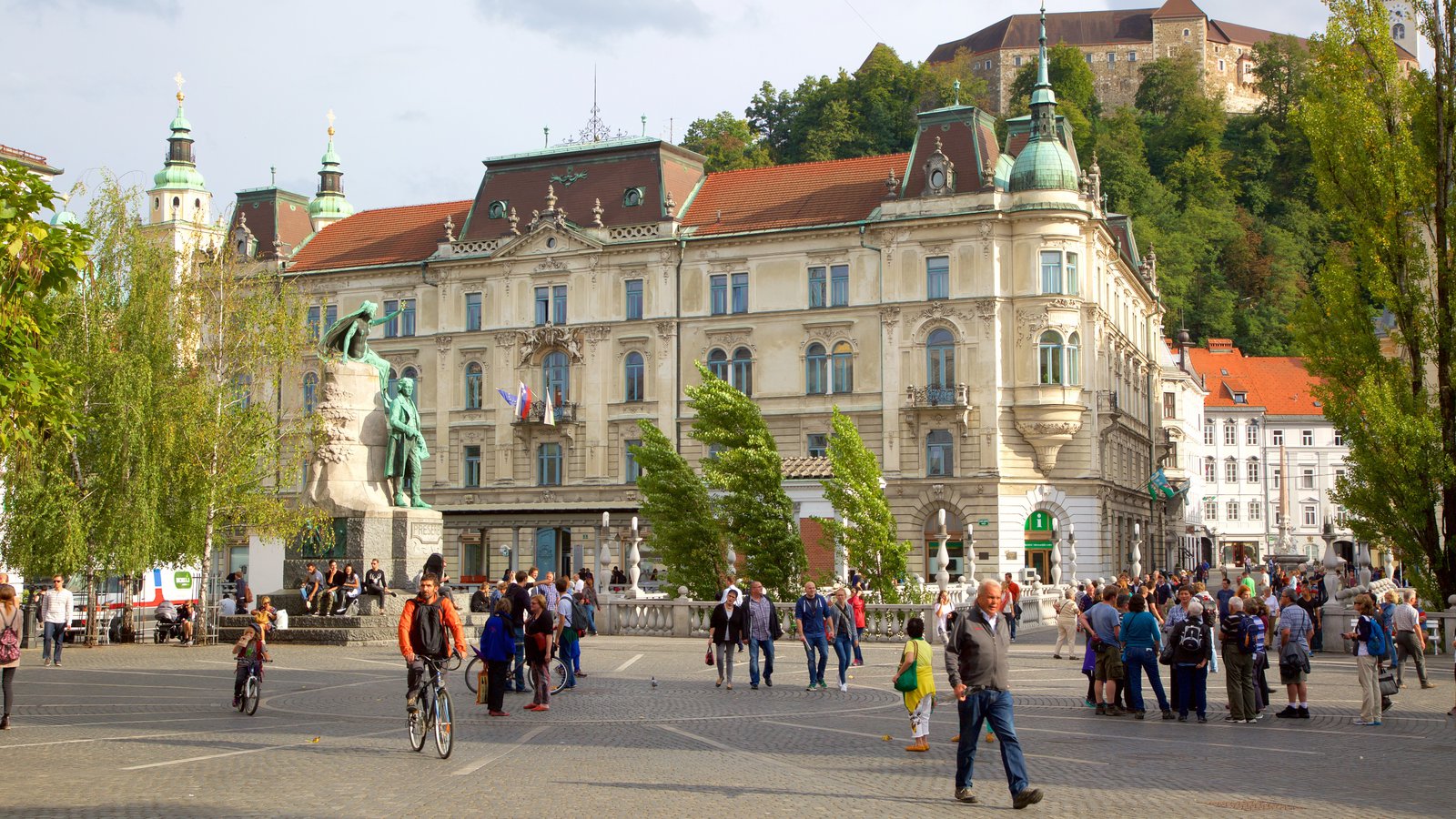
Dragon Bridge
As a Ljubljana trade-mark, the Dragon Bridge is one of the most well-known sights of the city. Four green dragons, two on each side, stand proudly to guard the bridge and the city itself. Though ladies beware….the dragon is said to wave its tail, when the bridge is crossed by a virgin! The history of the bridge goes far back in the past when it was wooden and called a Butchers’ Bridge. In 1901 the existing one was built in secession art style, dedicated to Franc Jozef, the Hapsburg Emperor. Written on the side are the years showing the time of his rule. Made of reinforced concrete, it is one of the first bridges in Europe built using this technique. You can easily see it from the Triple Bridge, streching over the Ljubljanica river at the other side of the market place.
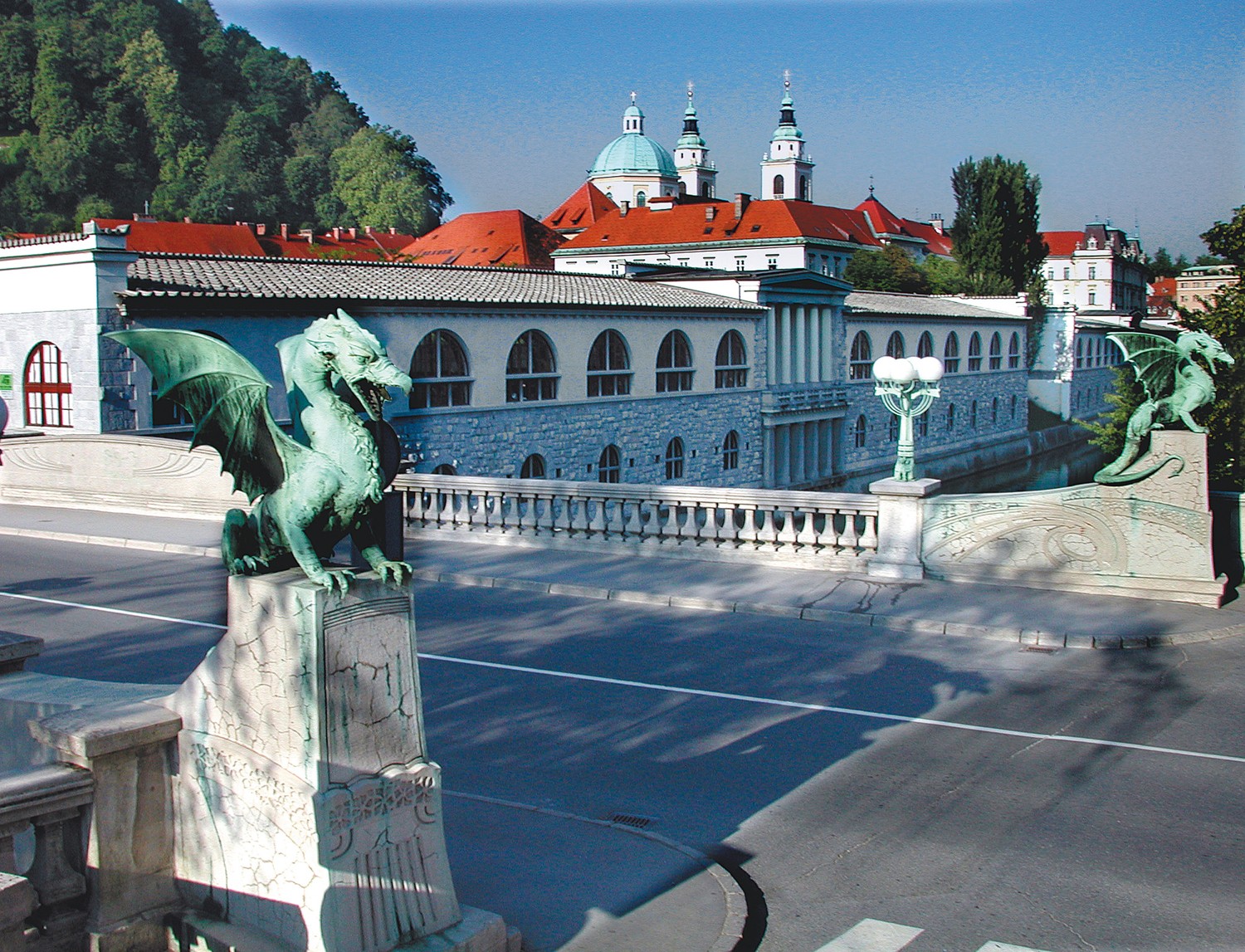
Cobblers’ Bridge
Cobblers`, also named Shoemakers` Bridge, is another bridge designed by Plecnik. You can recognize it by its upstanding pillars, supporting lamps and other stone balls. The bridge is a link from one side of the old town to another and a popular place for street artists, musicians, painters, and tourists taking photos of the river and the city.
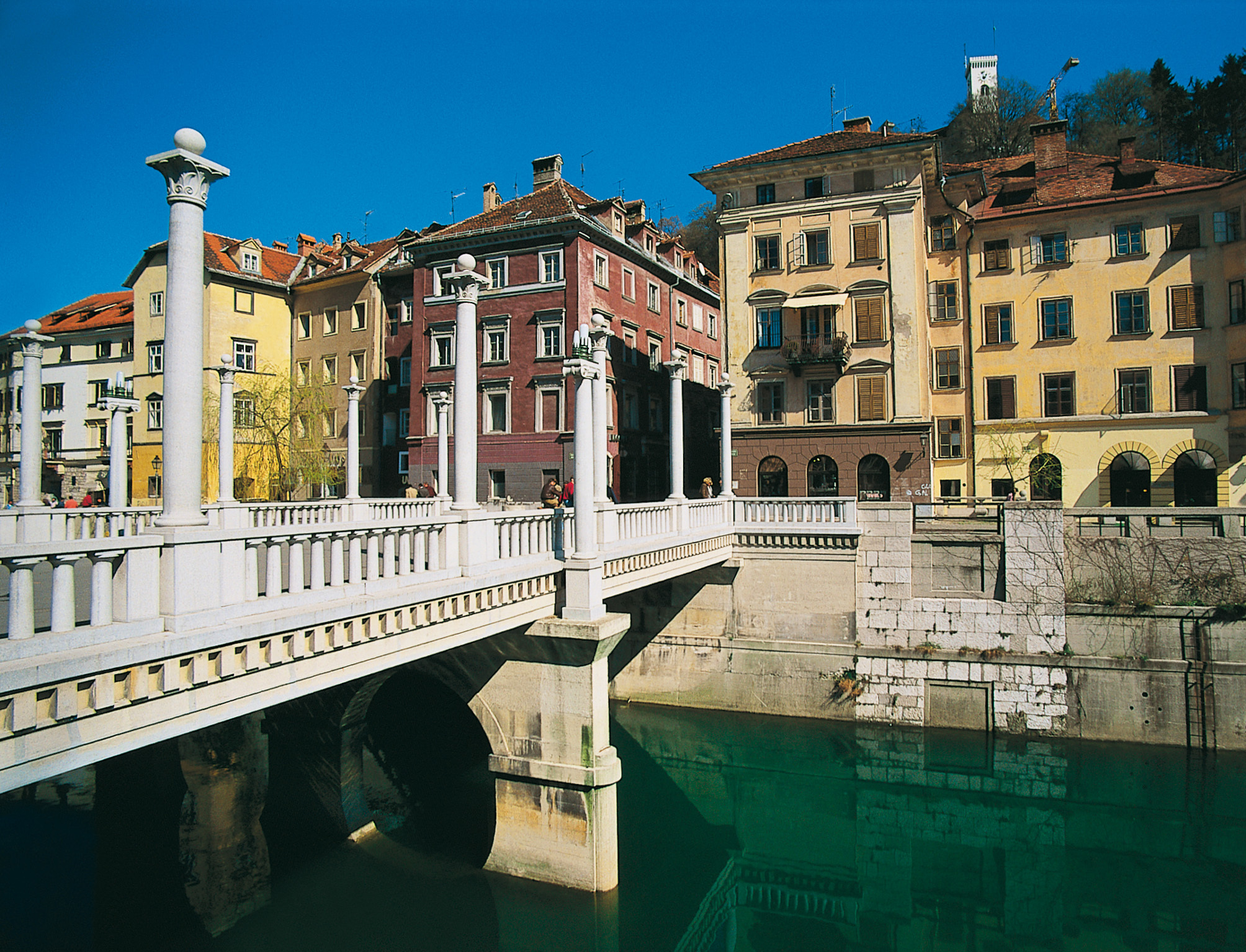
The Cathedral of St.Nicholas
The Cathedral of St. Nicholas is the main church of Ljubljana and also the biggest. Due to its height, two green bell towers and a dome it is very visible – indeed it is difficult to miss. It stands on the spot of an old Romanesque basilica from the 13th century, also dedicated to St. Nicholas, the patron Saint of fishermen. The decision to build a new church was taken in 1700 and in 1841 a wooden dome was replaced by today`s stone one. Located at Vodnikov trg (Vodnik Square) by the open market and opposite the Triple Bridge its surroundings are both vivid and constantly busy.
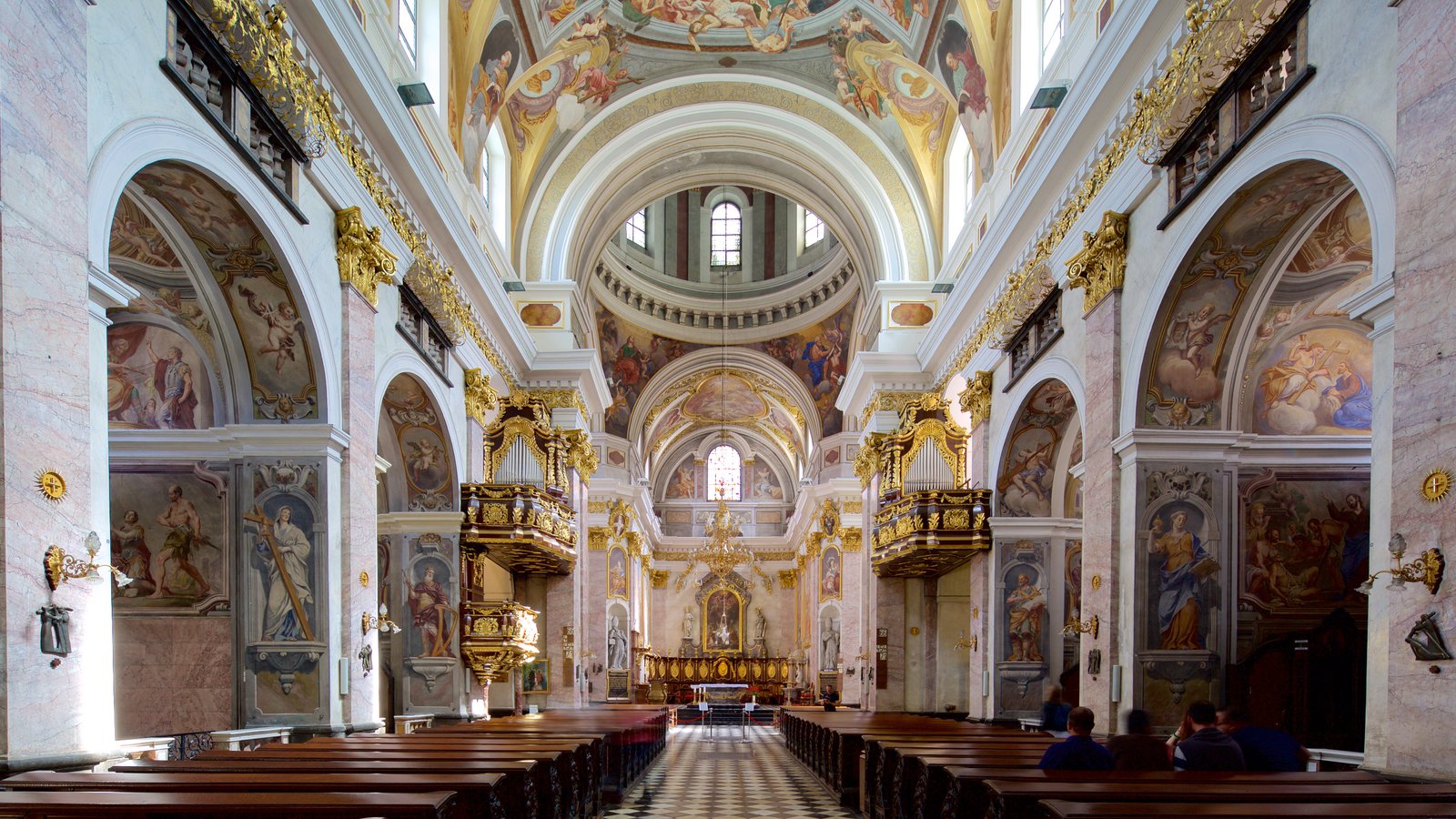
Slovene Philharmonic Orchestra building
Established by Italians in 1701 as Academia Philharmonicorum, the Slovenian Philharmonic Orchestra institution is one of the oldest of its kind. The leading symphony orchestra in the country was firstly based in the former Estate Theatre, built on the same spot in 1763. After the fire in 1885, the present palace with a neo-renaissance facade was built in 1891 by the architect Adolf Wagner. Members of the institution included names such as Josef Haydn, Ludwig van Beethoven, Johannes Brahms and Niccolo Paganini. It is found between the Congress Square and the river.
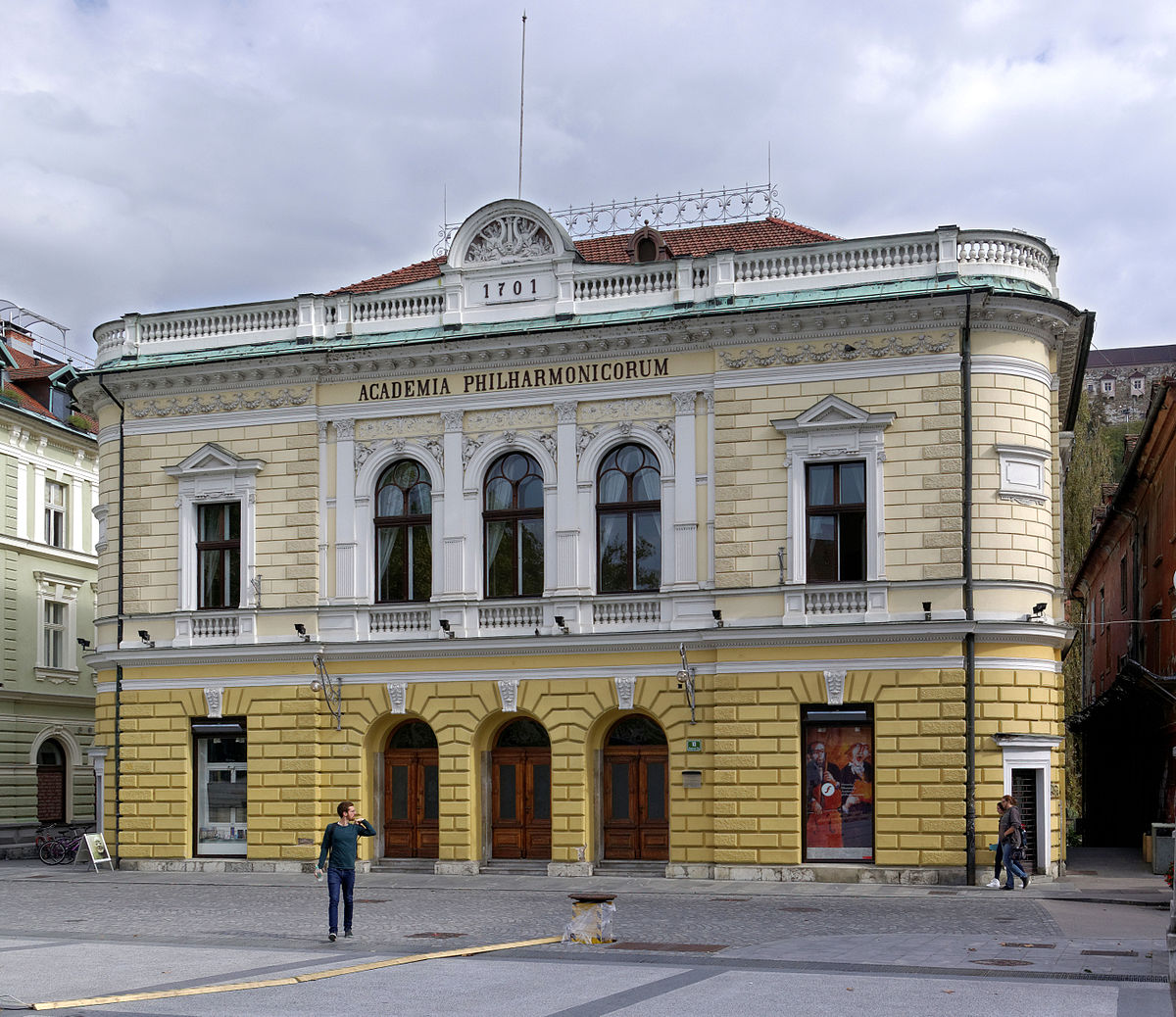
ZAGREB
Zagreb, the capital and largest city of Croatia, dates back to the Middle Ages. The Romans had built a settlement, Andautonia, in present-day Ščitarjevo. The name “Zagreb” was first used in 1094 at the founding of the Zagreb diocese in Kaptol, after the Slavs had arrived in the area. For most of its history, Zagreb was a small town to which big things happened. It has been ruled by Hungary and the Habsburg Monarchy, threatened by the Ottomans, and absorbed into Yugoslavia. Since 1995, as the capital of Croatia the city is on the way to becoming a Central European metropolis. Today Zagreb is the Croatian cultural, scientific, economic and political center. With numerous museums, galleries, theatres, churches, cafes, open markets, clubs and pubs, Zagreb is a city pulsing with life. A city which owes its beauty and charm to prosperous periods of baroque, classicism and secession.
Basic Facts
Country Name: Croatia
City: Zagreb (capital)
City Population: 790017
City Color: Blue
St. Mark’s Square
This square is named after the church in its centre whose varnished tiled roof is a symbol of the capital. The church itself is Romanesque and late Gothic. St. Mark’s Church dates back to at least the 13th century. The square is surrounded by numerous buildings which are the offices of the Croatian cabinet members and the Croatian sabor (Parliament).
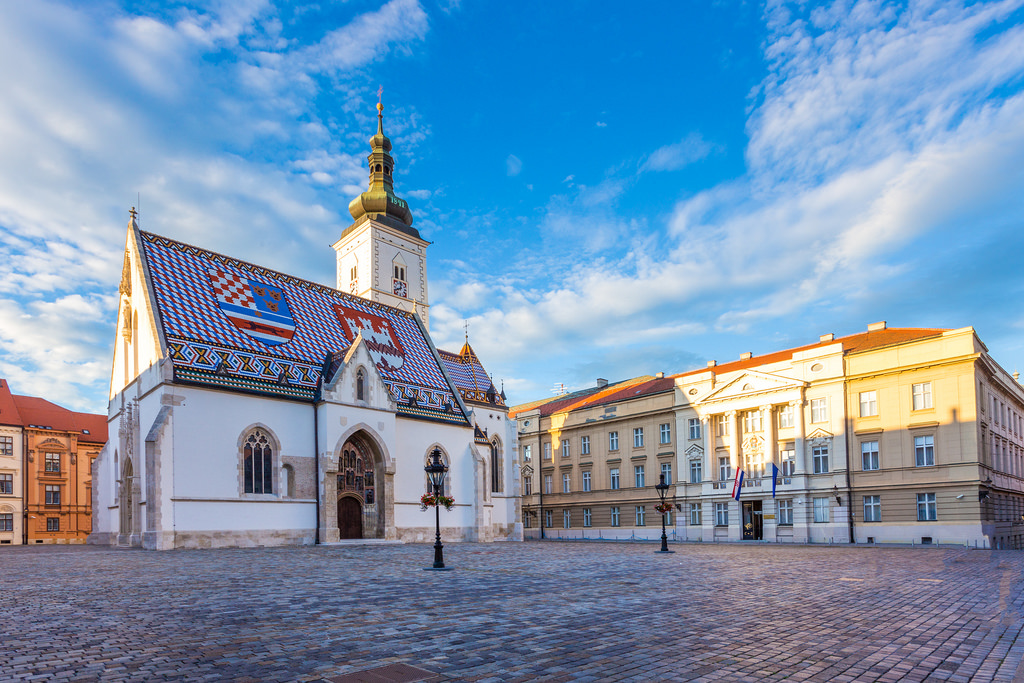
The Cathedral
Although parts of the cathedral date from the 13th century (and after), it was very badly damaged in an earthquake in 1880. Most of the structure, including its spires, dates from the late 19th/early 20th centuries. Inside the cathedral you will find the tomb of Cardinal Stepinac (who was Archbishop of Zagreb from 1937 to 1960) which contains a sculpture by Croatia’s most celebrated sculptor, Ivan Mestrovic. The baroque Archbishops’ Palace is attached to the cathedral.
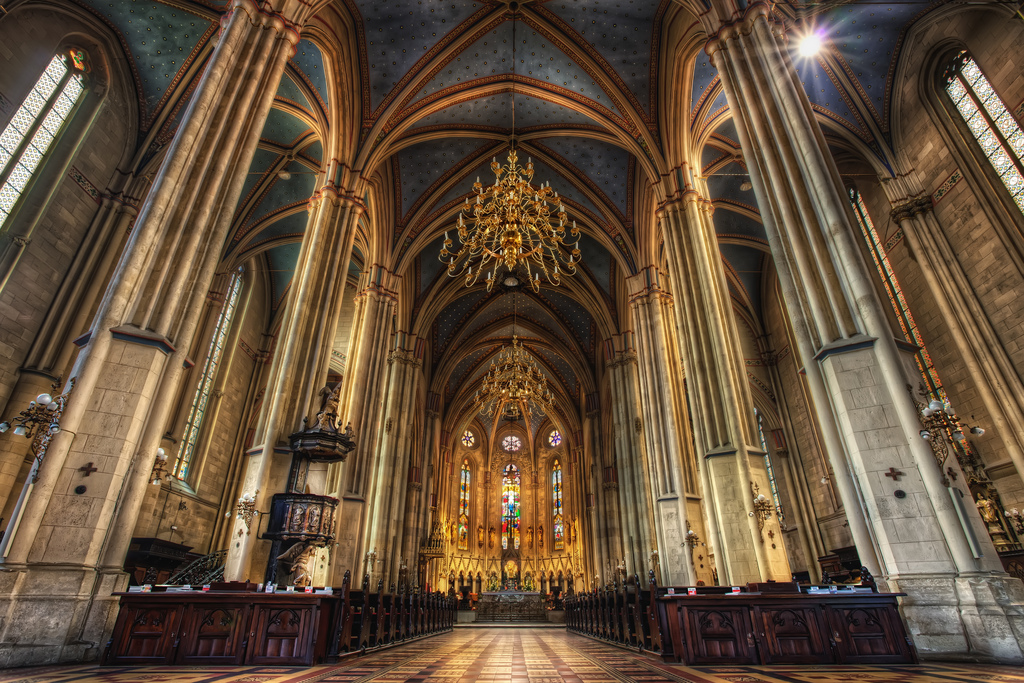
The Croatian National Theatre
Built in 1895 by Viennese architects Hermann Helmer and Ferdinand Fellner, the Croatian National Theatre (Hrvatsko Narodno Kazaliste) sits at the northwest corner of Zagreb’s “Green Horseshoe” in Donji Grad. Officially opened in 1894 by Austro-Hungarian Emperor Franz Joseph I, this imposing yellow structure in Trg Marsala is a landmark feature in the Lower Town. Built in Neo-Baroque and Rococo styles with two small domes at the front and a larger dome towards the back, the building also boasts a superb interior containing artworks by Vlaho Bukovac, and The Well of Life by Ivan Meštrović.
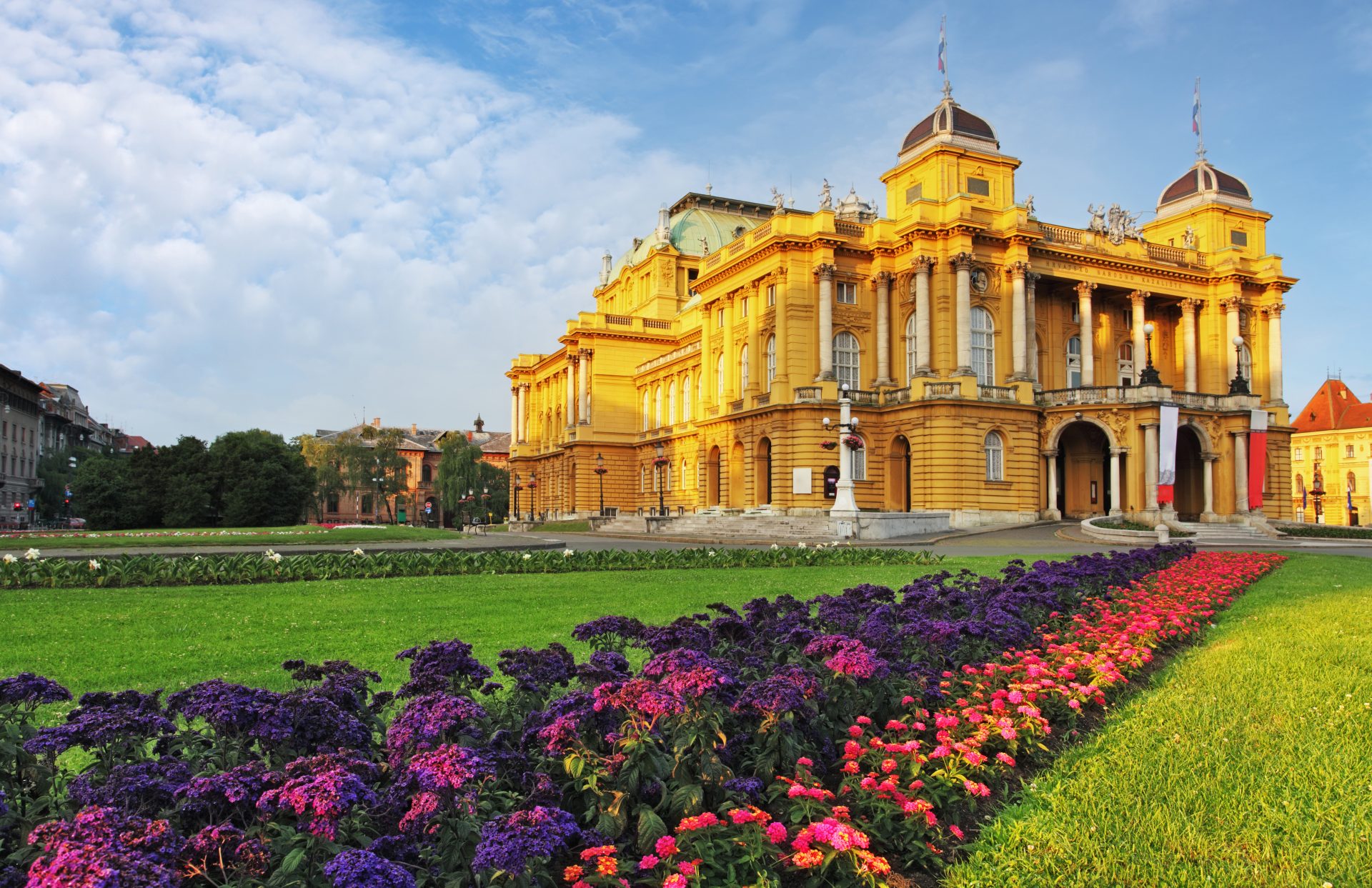
Maksimir Park
Designed in the style of an old English garden, Maksimir Park (Maksimirska) is a beautiful green space encompassing almost 45 acres. The largest park in Zagreb, it contains two pavilions: Bellevue Pavilion, built in 1843, and Echo Pavilion, added after a Swiss design. The park also boasts many excellent paths and trails, as well as manmade lakes, wooded areas, and flower gardens, making it a great place to relax or have a picnic. For those traveling with youngsters, there’s also a small zoo. Referred to by locals as Zagreb’s “living monument,” Maksimir Park is named after Bishop Maksimilijan Vrhovac, who was responsible for its construction in 1794. Across from Maksimir park is the Dinamo Football Stadium where Croatia hosts international matches.
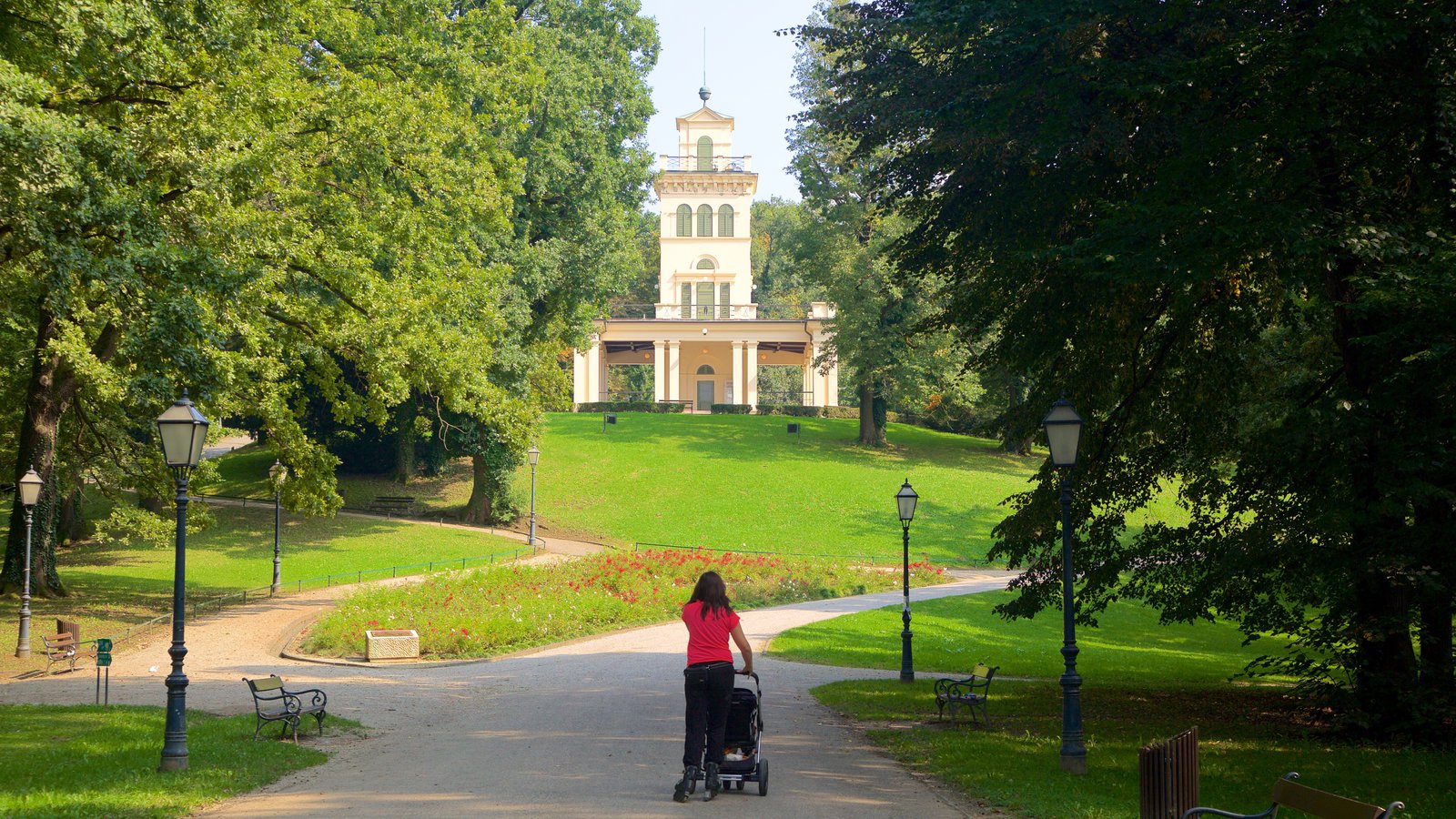
Lotrscak Tower
Built to guard the southern gate of the Gradec town wall, the Lotrščak Tower (Kula Lotrščak) dates to the 13th century and has long been one of Zagreb’s most recognizable landmarks. Legend has it that this large, square Romanesque tower once held a bell that rang out each night prior to the closing of the gates to warn residents outside the walls to return (anyone left outside would have to remain there for the night). The people of Zagreb are reminded of the time each day at midday when a cannon – called the Gric cannon – is fired.
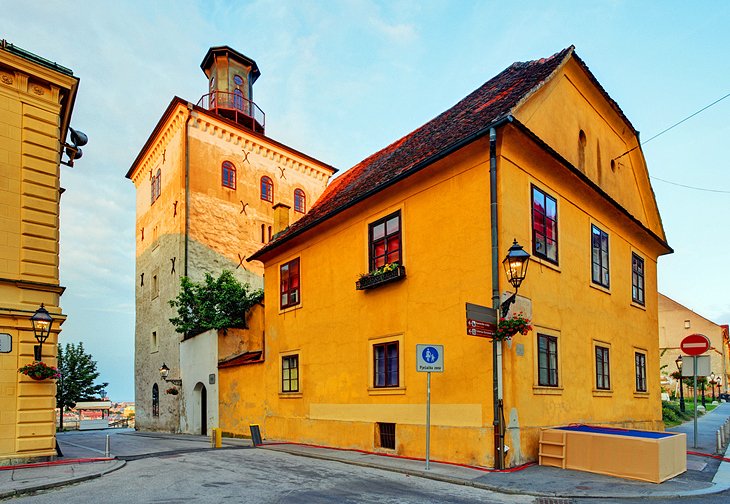
Ben Jelacic Square
Road traffic is also prohibited on this square, which is a gathering point for the modern city and is served by no fewer than seven of the city’s tram lines. Here you’ll get the sense of Zagreb as a bustling place of business, full of office workers and shoppers, and you can people-watch from the table of a sidewalk cafe. The square is named after 19th-century ruler, Count Josip Jelačić who was considered an expert military strategist. His statue was erected in the square in the 1800s, but because Jelačić came to symbolise Croatian nationalism it was removed during communist times before being reinstated in 1990.
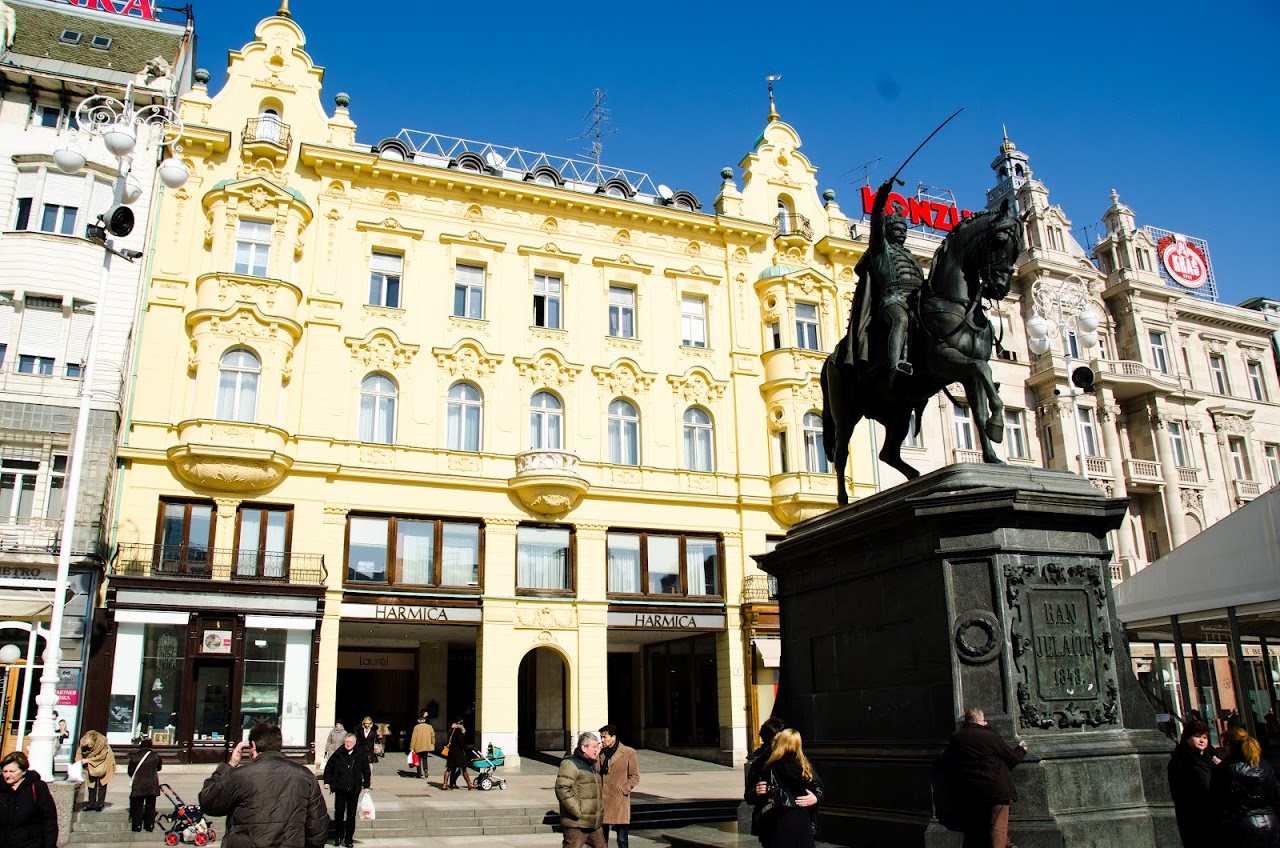
Dolac Market
Near the cathedral is Zagreb’s main market – the colorful Dolac. It is definitely worth a visit to see all the stalls and sellers in action. You will find many food items (particularly fruit and veg) on sale, although there will also be some craft items and other little bits and pieces on offer. You can also have an inexpensive meal in one of the fast-food kiosks close by.
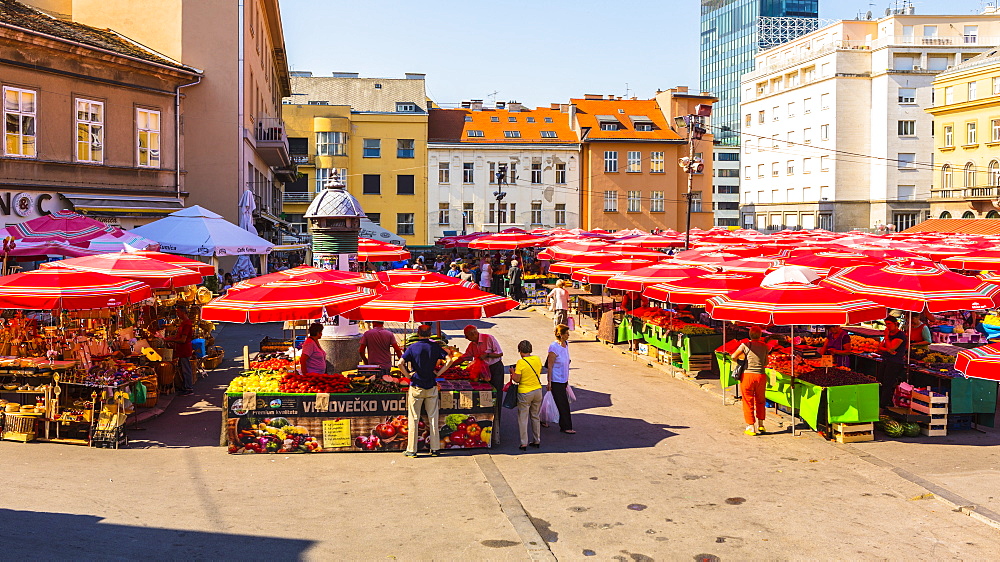
SPLIT
Croatia’s second-largest city, Split is a great place to see Dalmatian life as it’s really lived. Always buzzing, this exuberant city has just the right balance of tradition and modernity. Still, it is the breathtaking centerpiece of the city — Diocletian’s Palace, a UNESCO World Heritage site dating back to A.D. 295, and a recent film location for “Game of Thrones” — that makes Split so memorable.
You’ll see dozens of bars, restaurants and shops thriving amid the atmospheric old walls where Split life has been humming along for thousands of years.
Split has it all: Roman ruins and grand museums alongside fashionable cafes and trendy shops. But what makes this city most alluring is not just its proximity to the sandy beaches and rocky coves of nearby islands, but its location overlooked by mountains and edged by the deep blue Adriatic Sea.
Basic Facts
Country Name: Croatia
City Population: 1670000
Also known as: City of the Olympics
Almost 100 Olympic medals are from Split (basketball, handball, football, water polo, taekwondo and many others)
Diocletian’s Palace
Facing the harbour, Diocletian’s Palace is one of the most imposing Roman ruins in existence and where you’ll spend most of your time while in Split. Don’t expect a palace though, nor a museum – this is the city’s living heart, its labyrinthine streets packed with people, bars, shops and restaurants. Built as a military fortress, imperial residence and fortified town, the palace measures 215m from north to south and 180m east to west, altogether covering 38,700 sq metres.
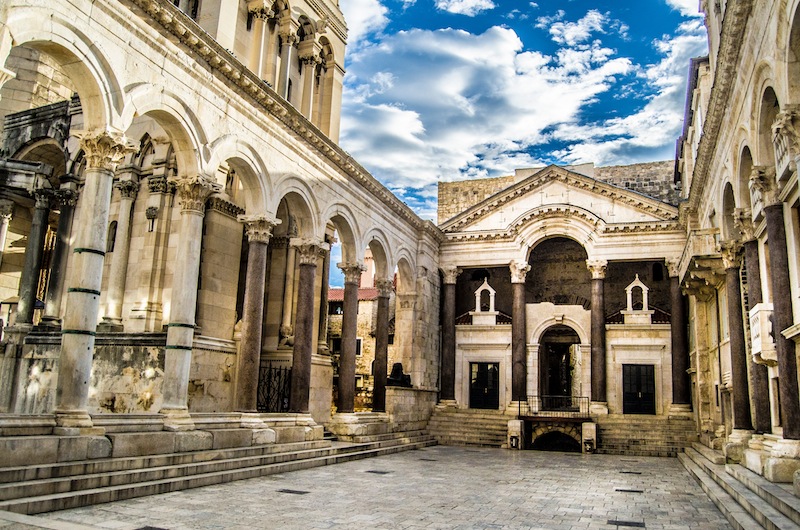
Peristyle Square
In front of the cathedral is the Peristyle square, the most popular among Split attractions, surrounded by columns that are the center of cultural life in Split, where the extraordinary acoustics maintained traditional cultural and musical events of Split Summer Festival.

Cathedral of St Dominius
Split’s octagonal cathedral is one of the best-preserved ancient Roman buildings standing today. It was built as a mausoleum for Diocletian, the last famous persecutor of the Christians, who was interred here in 311 AD. The Christians got the last laugh, destroying the emperor’s sarcophagus and converting his tomb into a church in the 5th century, dedicated to one of his victims.
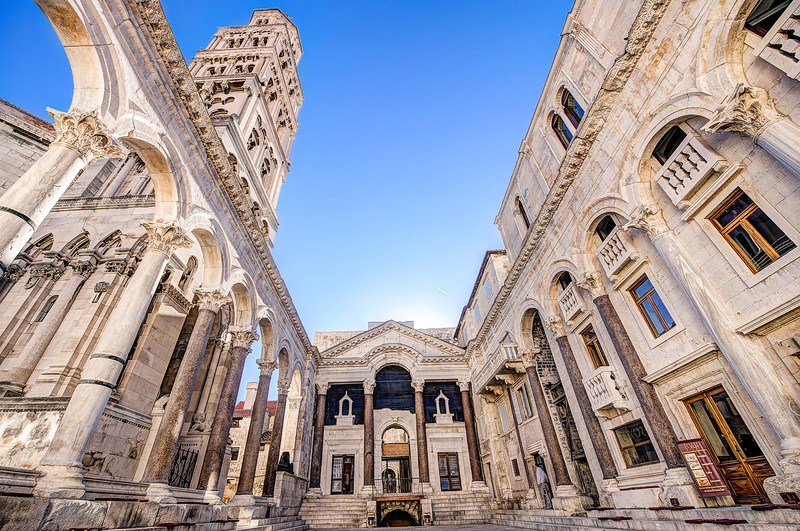
Temple of Jupiter
Although it’s now the cathedral’s baptistery, this wonderfully intact building was originally an ancient Roman temple, dedicated to the king of the gods. It still has its original barrel-vaulted ceiling and a decorative frieze on the walls, although a striking bronze statue of St John the Baptist by Ivan Meštrović now fills the spot where the god once stood. Of the columns that once supported a porch, only one remains. The black granite sphinx guarding the entrance was already ancient when the Romans dragged it from Egypt in the 3rd century. It was literally defaced by the Christians, who considered it a pagan icon.
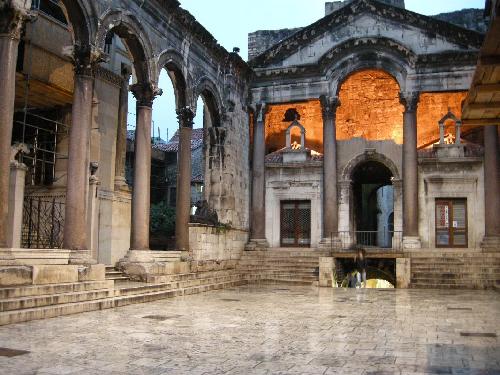
DUBROVNIK
The city of Dubrovnik (Latin: Ragusa) was built on maritime trade. In the Middle Ages it became the only city-state in the Adriatic to rival Venice. Supported by its wealth and skilled diplomacy, the city achieved a remarkable level of development during the 15th and 16th centuries. Furthermore, Dubrovnik was one of the centres of the development of the Croatian language and literature, home to many notable poets, playwrights, painters, mathematicians, physicists and other scholars.
Today Dubrovnik is the proudest feather in Croatia’s tourist cap, an elite destination and one of the most beautiful towns in the Mediterranean. Dubrovnik used to be an independent republic, surviving mostly on trade. It managed to survive many centuries, with constant threats to its territory, particularly from the mighty Ottoman Empire and Venice.
Dubrovnik is steeped in stunning architecture and sculptural detail, and boasts spectacular churches, monasteries, museums, and fountains.
Basic Facts
Country Name: Croatia
City Population: 40000
Also known as: Pearl of the Adriatic
It is one of the most prominent tourist resort of the Mediterranean
Rector Palace
Rector’s Palace was the seat of the Rector, who was elected to the post every month so as not to feel the sweetness of power.
During his reign, the Rector did not leave the palace unless statesman and protocol obligations required. Pile Gate and Ploce Gate were drawn every evening and locked with the keys given to the Rector overnight, which he then returned to the people in the morning. In Knezev Dvor there were halls for sessions of the Great and Small Council, an armoury, jail, courthouse and powder magazine which twice exploded, shattering palace, which was eventually rebuilt in the Baroque style.
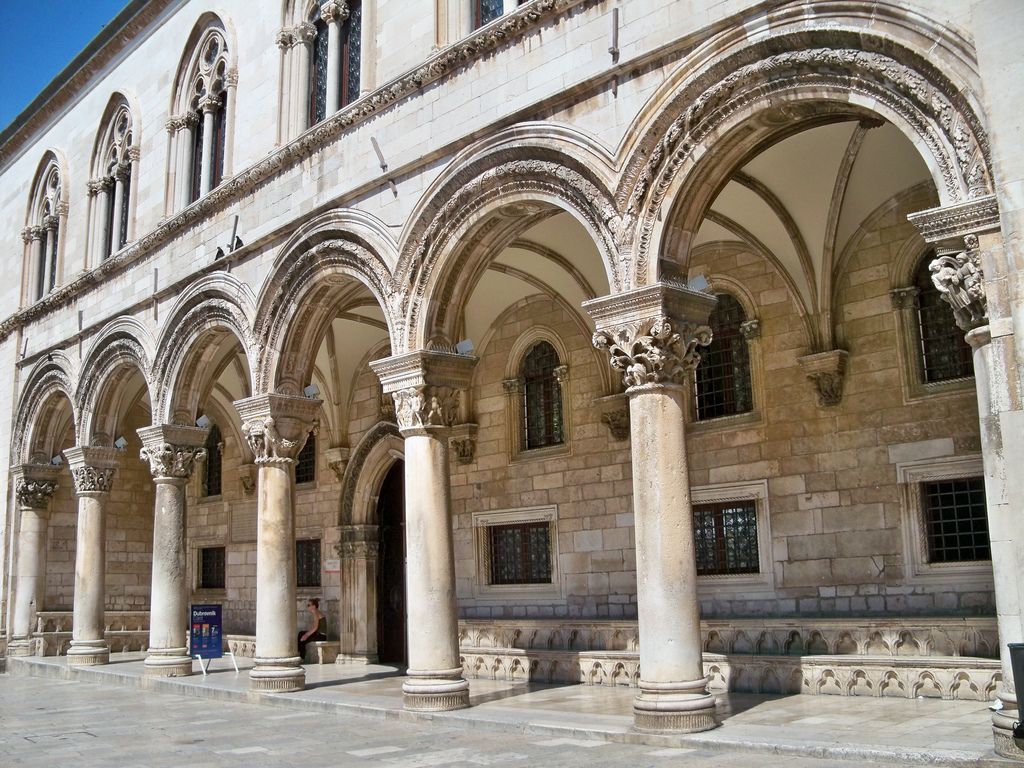
The Old Pharmacy in Franciscan Monastery
It was founded in 1317 as in-house pharmacy for Franciscan friars, which was later, introduced to the public servicing the whole Town’s population and even beyond the town’s walls.
Nowadays, in the pretty courtyard of Franciscan Monastery’s complex, intricate cloister lead to the Old Pharmacy Museum where among the exhibits you can see various pharmaceutical tools, containers, grinders and similar from the times of old Ragusa.
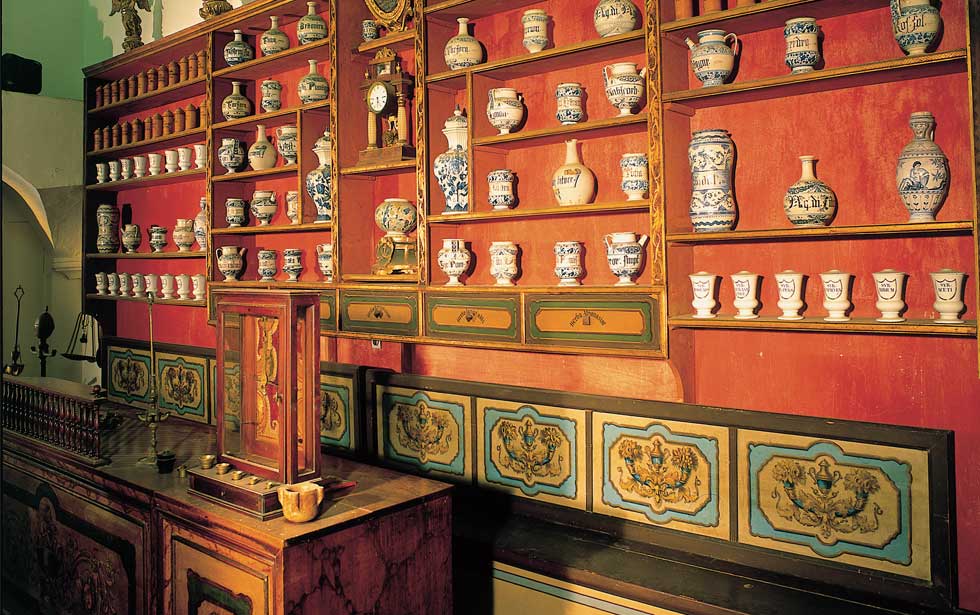
Stradun Square
Stradun (or officially ‘Placa’) is the main street in Dubrovnik Old Town. It divides the Old town (part of Dubrovnik built within medieval walls) on two, more or less, equal parts – northern and southern. Stradun is stretched from Pile Gate (western entrance to the old town) to the Old Town’s port. It used to be a channel that divided small island on which Dubrovnik was built from the mainland. Later on, the channel was filled to create the main town’s street.
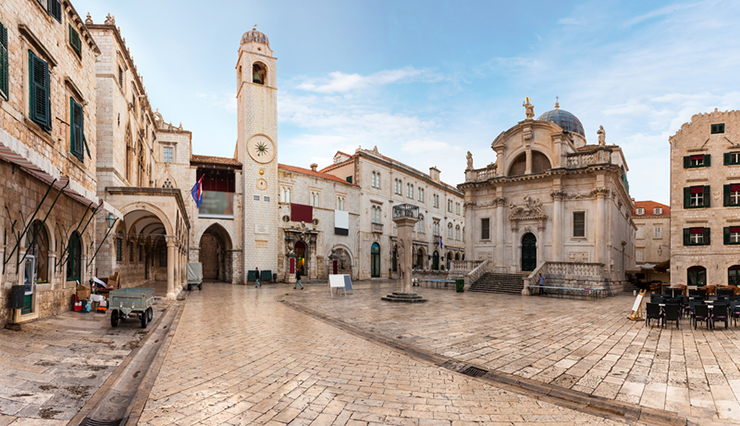
BUDVA
In the heart of the Adriatic coast of Montenegro, Budva is awaiting you and your unforgettable holiday is yet to begin. It looks at open sea, abounding in Mediterranean flora. In the hinterland of the Riviera of Budva, there is mountain Lovćen, which protects it from cold north winds and provide conditions for mild Mediterranean climate, which pleasantly impresses every visitor who comes to enjoy in the beauties of its climate.
The center of the Riviera is Budva, one of the oldest settlements in the Adriatic, with its old town with records from before the 5th century of our era. There are about forty beautiful settlements, villages in the Riviera among which is Bečići, whose beach was in 1935 in Paris proclaimed as the most beautiful beach in Europe, then Miločer – former royal residence, unique town – hotel, Sveti Stefan, Petrovac – Lastva, which is mentioned for the first time “Chronicle of Pope Dukljanin” in the 12th century.
Visit the wall of the Old town of Budva and feel the spirit of antique and renaissance charm of Budva.
You have 35 beautiful, sandy beaches (8 beaches have blue flag – a prestige international award for quality and standard of service and offer at the beach), clean and safe sea with unforgettable day and night life, unique theatre plays and musical entertainment programs.
Basic Facts
Country Name: Montenegro
City Population: 13,338
Also known as:Riviera of sandy beaches The Riviera of Budva is 25 km long and is in the center of Montenegrin coastline, covering 122 km². There are many coves, sandy beaches, capes and islets and picturesque settlements along the very coastline, which is why it is called the “Riviera of sandy beaches”.
The old town
The old town is Budva’s trademark. It is raised on the island, which used to be connected for the land by a sandy covering and so it grew into a peninsula. The Old Budva’s town is a unique architectonic and urban entity, which is mentioned as a lodgment even in the antique period. Budva according to those sources is one of the oldest urban centers in the Adriatic; it is more than 2.500 years old.
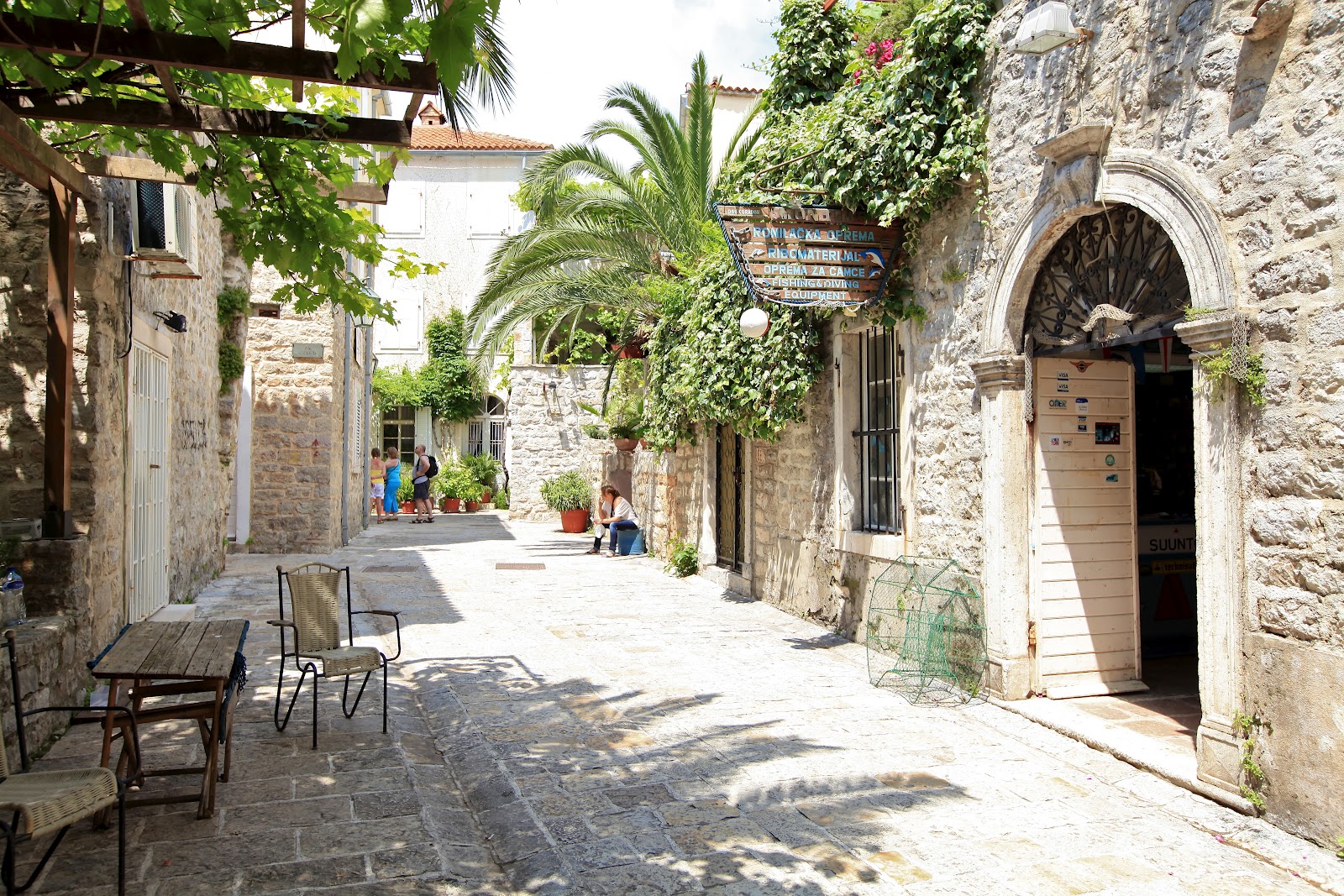
TIRANA
Tirana was founded as a city in 1614, although the area has been continuously inhabited since antiquity. One of the ancient monuments, the Tirana Mosaic is believed to have been part of a 3rd-century Ancient Roman house. Tirana did not attain much significance until the early 20th century, when the Congress of Lushnje proclaimed it Albania’s capital following the country’s declaration of independence in 1912.Tirana is the largest city in Albania and one of largest cities in the Balkans, ranking 7th, with a population of 800,000. The city is ranked among the ten sunniest cities in Europe, with 2,544 hours of sun per year.
Tirana is considered the heart of Albania because of its central location and its importance in finance, commerce, media, entertainment, arts, international trade, education, service, research and healthcare.
Basic Facts
Country Name: Albania
City Population: 800000
Capital city of Albania
Skenderbeg Square
The Skanderbeg Square is the main plaza in the centre of Tirana, Albania. The square is named after the Albanian national hero Gjergj Kastrioti Skënderbeu. Skanderbeg (born 1405, northern Albania – died Jan. 17,1468, Lezhë, Albania), national hero of the Albanians. A son of John (Gjon) Kastrioti, prince of Emathia, George was early given as hostage to the Turkish sultan. Converted to Islām and educated at Edirne, Turkey, he was given the name Iskander—after Alexander the Great—and the rank of bey (hence Skanderbeg) by Sultan Murad II. During the defeat of the Turks at Niš (1443), in Serbia, Skanderbeg abandoned the Turkish service and joined his Albanian countrymen against the forces of Islām. He embraced Christianity, reclaimed his family possessions, and in 1444 organized a league of Albanian princes, over which he was appointed commander in chief.
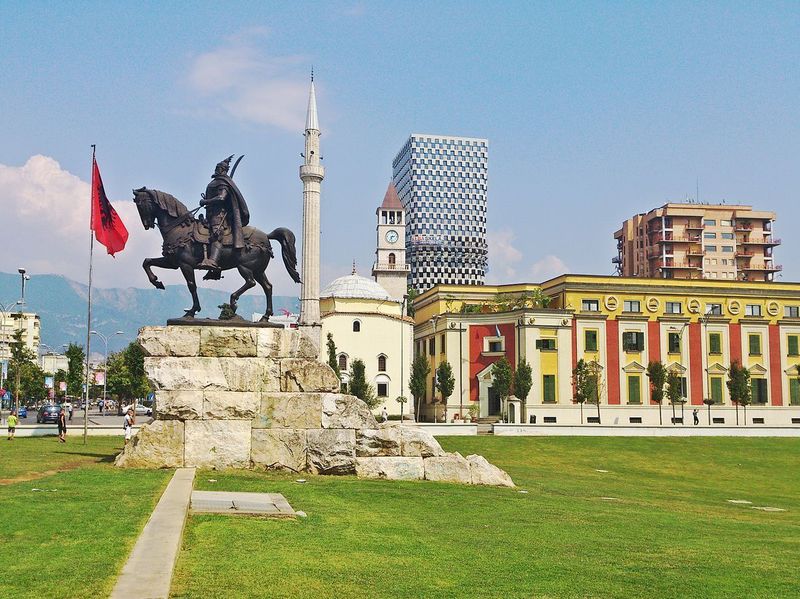
Et’hem Bey Mosque
The Et’hem Bey Mosque (Albanian: Xhamia e Et’hem Beut) is an 18th-century mosque located in the center of the Albanian capital Tirana. Closed under communist rule, the mosque reopened as a house of worship in 1991, without permission from the authorities. 10,000 people attended and the police did not interfere. Frescoes outside and in the portico depict trees, waterfalls and bridges – motifs rarely seen in Islamic art.
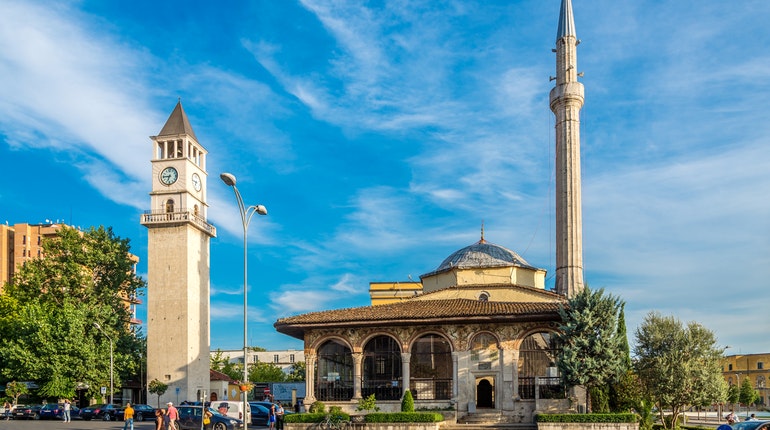
Tirana Boulevard
The Dëshmorët e Kombit Boulevard a major boulevard in Tirana. It was planned by the Italian architect Gherardo Bosio and built in 1939 to 1941. Many buildings are located along this boulevard, including the Presidential Palace, the Prime Minister’s Office, the Palace of Congress and the University of Tirana. The boulevard enters the city centre from the south and intersects with Bajram Curri Boulevard near the Rinia Park. It then becomes part of Skanderbeg Square and continues north of the centre to Zogu I Boulevard.

Pyramid of Tirana
The Pyramid of Tirana is a structure and former museum located in Tirana, Albania.Opened on October 14, 1988 as the Enver Hoxha Museum, the structure served as a museum about the legacy of Enver Hoxha, the long-time leader of Communist Albania who had died three-years earlier. The structure was co-designed by Hoxha’s daughter Pranvera Hoxha, an architect, her husband Klement Kolaneci. At the time, the Pyramid was said to be the most expensive individual structure ever constructed in Albania. Some sources have referred to it as the “Enver Hoxha Mausoleum” although this was never its official appellation.
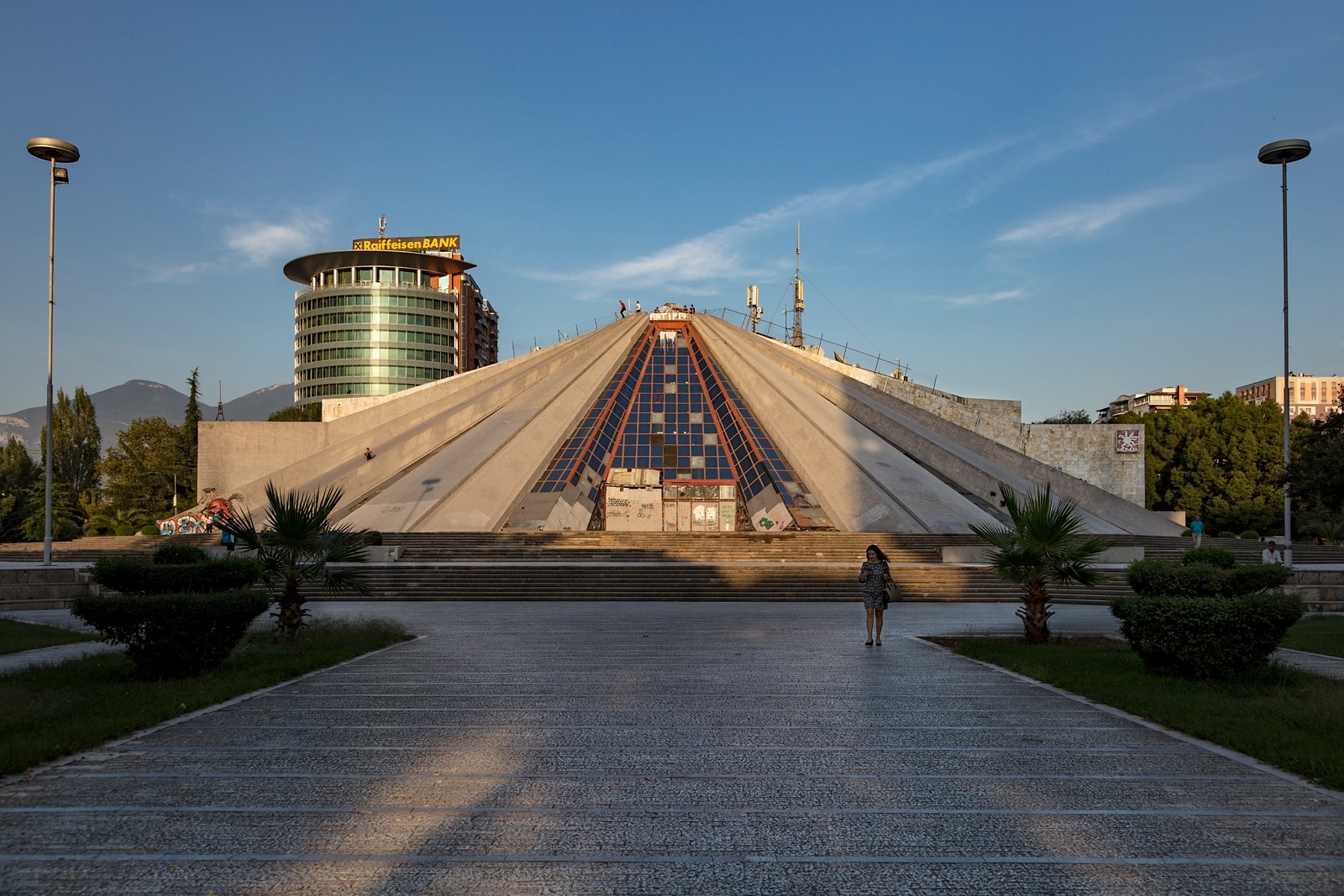
National Historical Museum
The National Historical Museum (Albanian: Muzeu Historik Kombëtar) is the national historical museum of Albania and the country’s largest museum located in Tirana. It was opened on 28 October 1981 and is 27,000 square metres in size, while 18,000 square metres are available for expositions.Above the entrance of the Museum is a large mural mosaic titled The Albanians that depicts purported ancient to modern figures from Albania’s history.The Museum includes the following pavilions, the Pavilion of Antiquity, Middle Ages, Renaissance, Independence, Iconography, National Liberation , Antifascist War, Communist Terror, and Mother Teresa.
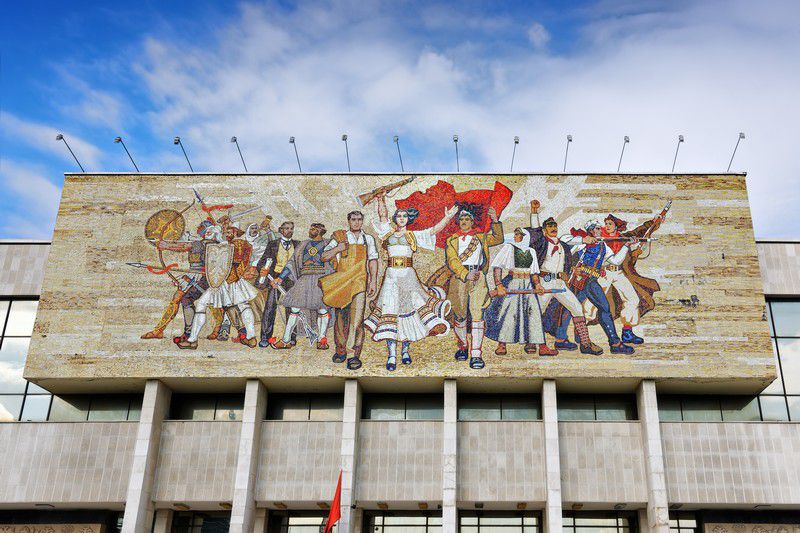
Tirana Mosaic
The Tirana Mosaic (Albanian: Mozaiku i Tiranës) is a landmark in Tirana, Albania. It is believed to have been part of a 3rd century Roman house, referred to by local archeologists as the ‘Villa Rustica’. Later, in the 5th and 6th centuries, a Paleo-Christian Basilica was built around this site. It was declared a cultural monument of the first category in June 1973.
The ruins of this Paleo-Christian Basilica were discovered in 1972. In 2002, some other objects were found around the ruins of the house, and today they form the Archaeological Complex of the Mosaic of Tirana. It is the only archaeological monument within the city. Some of the ancient mosaics discovered at the site that feature diverse geometrical patterns and depict poultry and fish. It was re-opened to the public on 23 January 2010.
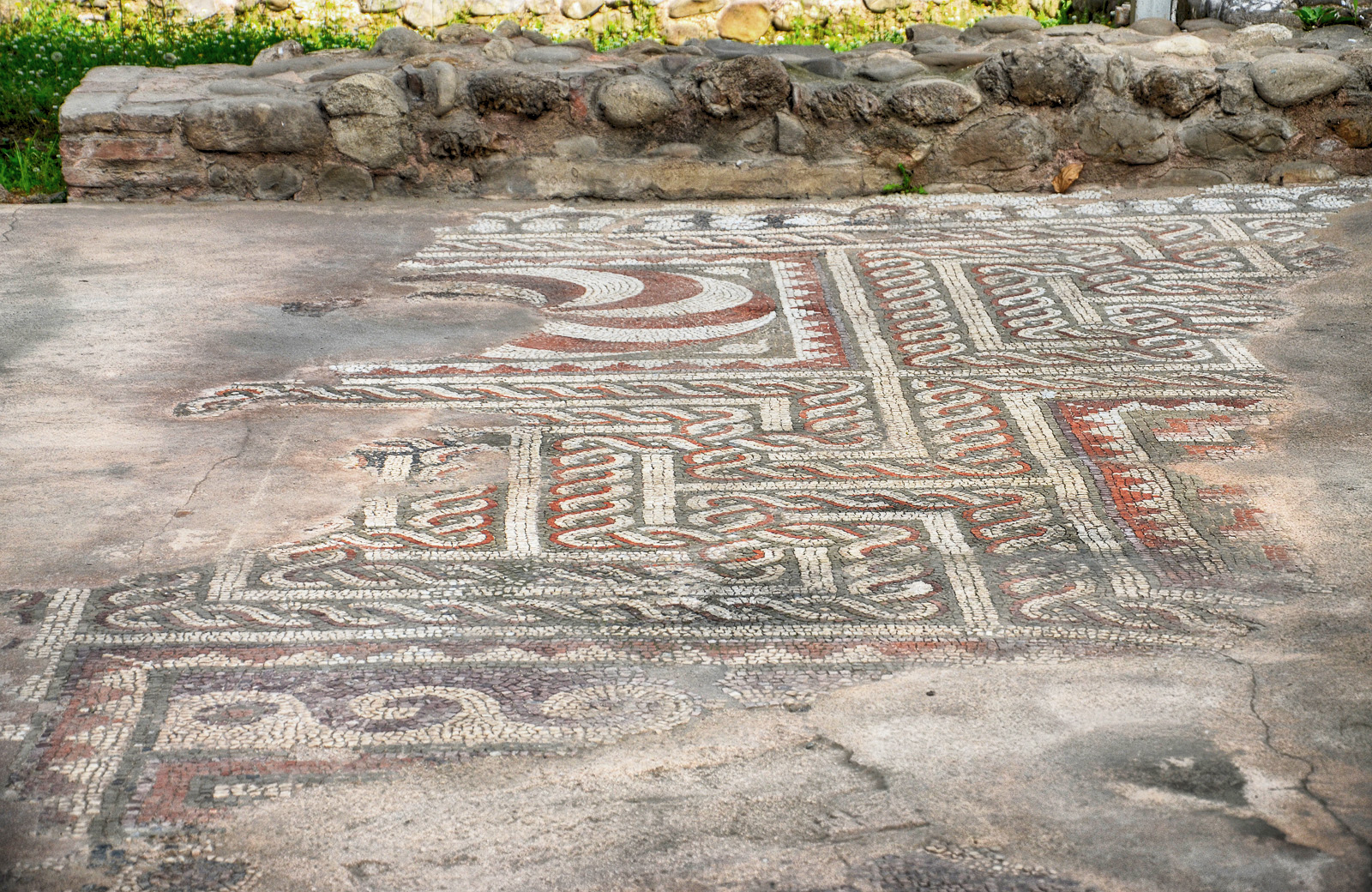
OHRID
Ohrid is a city in the Republic of Macedonia and the seat of Ohrid Municipality. It is the largest city on Lake Ohrid and the eighth-largest city in the country, with over 42,000 inhabitants as of 2002. Ohrid is notable for once having had 365 churches, one for each day of the year, and has been referred to as a “Jerusalem (of the Balkans)”. The city is rich in picturesque houses and monuments, and tourism is predominant. It is located southwest of Skopje, west of Resen and Bitola. In 1979 and in 1980 respectively, Ohrid and Lake Ohrid were accepted as Cultural and Natural World Heritage Sites by UNESCO. Ohrid is one of only 28 sites that are part of UNESCO’s World Heritage that are Cultural as well as Natural sites.
Basic Facts
Country Name: Macedonia
City Population: 42000
Also Known As: “Jerusalem (of the Balkans)”; Ohrid is notable for once having had 365 churches
Church of St. Sophia
The Church of St. Sophia is located in the city of Ohrid, Republic of Macedonia. The church is one of the most important monuments of Macedonia, housing architecture and art from the Middle Ages.
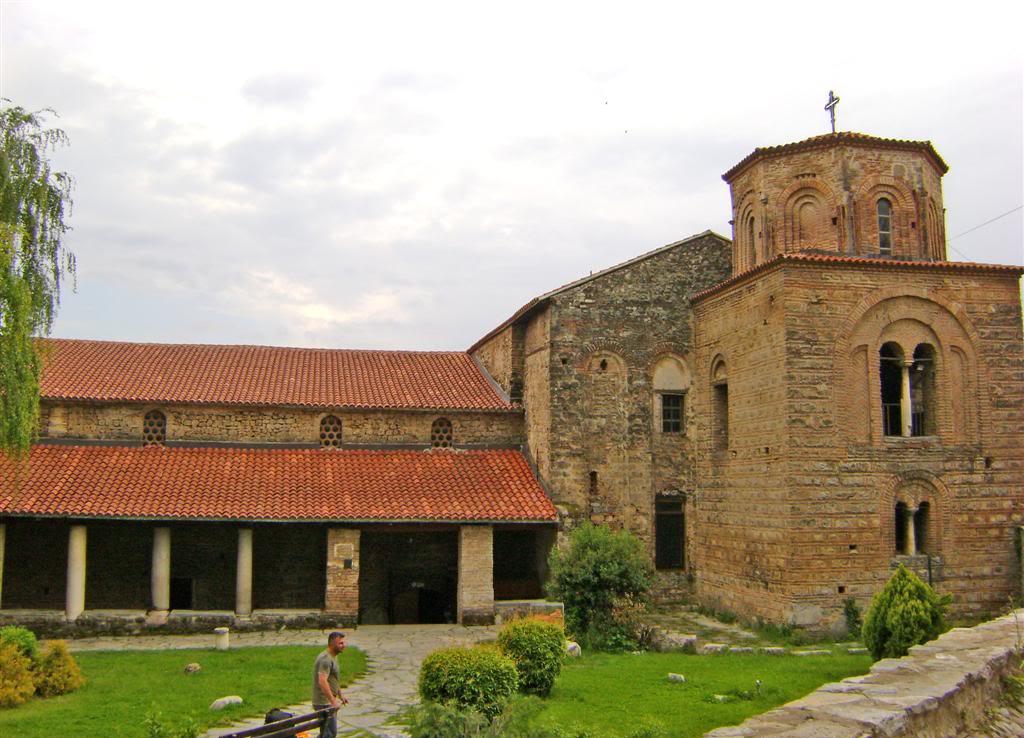
Ancient theatre of Ohrid
The Ancient theatre of Ohrid of the Hellenistic period. It was built in 200 BC and is the only Hellenistic-type theatre in the country as the other are from Roman times. It is unclear how many people the original theater used to seat, as only the lower section still exists. The open theater has a perfect location: the two hills that surround it keep it protected from winds that could interfere with acoustics during performances.
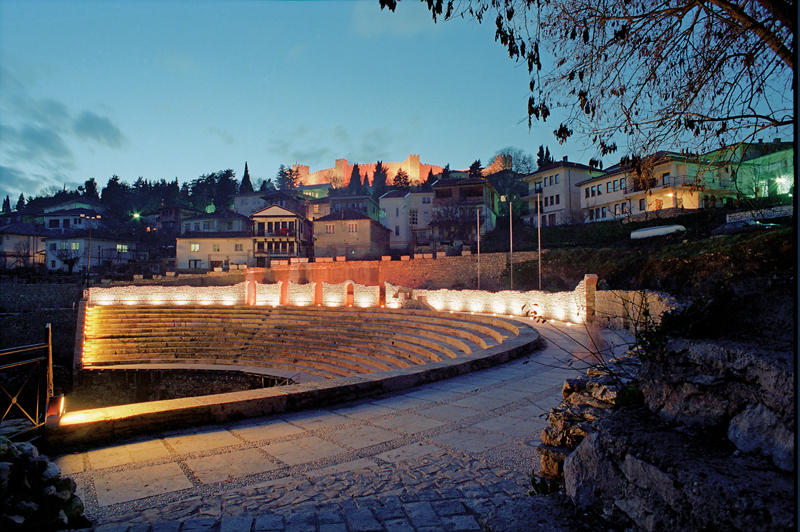
Samuel’s Fortress
Samuel’s Fortress is a fortress in the old town of Ohrid. It was the capital of the First Bulgarian Empire during the rule of Tsar Samuel of Bulgaria at the turn of the 10th century. Today, this historical monument is a major tourist attraction and was renovated in 2003.
According to recent excavations by Macedonian archaeologists, it was contended that this fortress was built on the place of an earlier fortification, dated to the 4th century BC, which was probably built by King Philip II of Macedon.
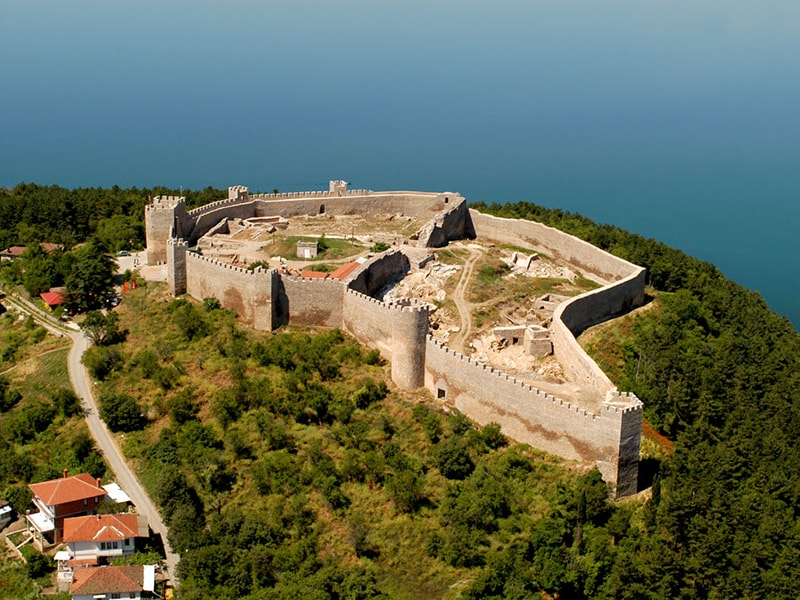
Lake Ohrid
Samuel’s Lake Ohrid straddles the mountainous border between southwestern Macedonia and eastern Albania. It is one of Europe’s deepest and oldest lakes, preserving a unique aquatic ecosystem that is of worldwide importance, with more than 200 endemic species. The importance of the lake was further emphasized when it was declared a World Heritage Site by UNESCO in 1979 and when, in 2010, NASA decided to name one of Titan’s lakes after Lake Ohrid. In 2014, the Ohrid-Prespa Transboundary Reserve between Albania and Macedonia was added to UNESCO’s World Network of Biosphere Reserves.The towns situated at the lakeside are Pogradec in Albania, along with Ohrid and Struga in Macedonia. The lake is otherwise densely surrounded by settlements in the form of villages and resorts in both basin countries.
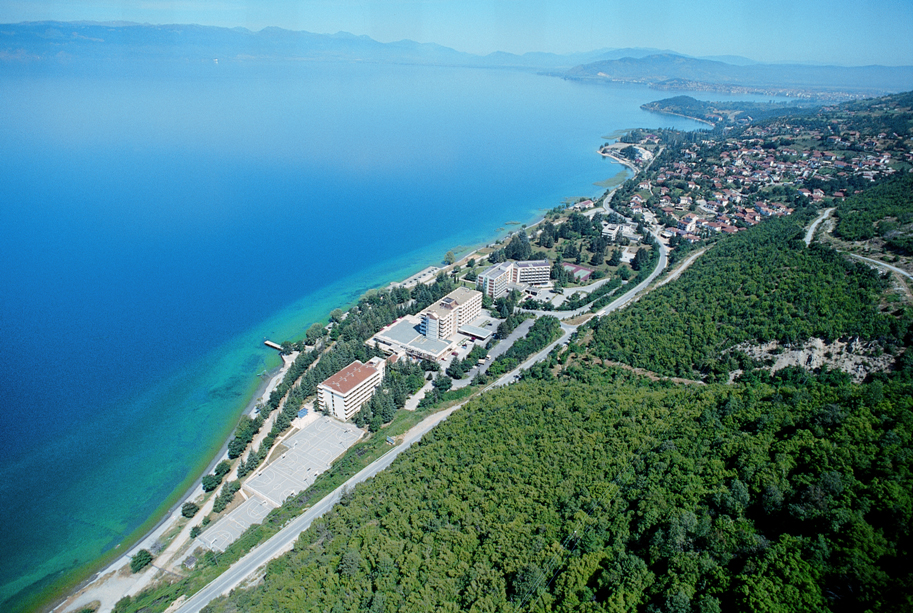
BELGRADE
Belgrade is the capital and largest city of Serbia. It is located at the confluence of the Sava and Danube rivers, where the Pannonian Plain meets the Balkans. Its name translates to “White city”. The urban area of the City of Belgrade has a population of 1.23 million, while over 1,68 million people live within its administrative limits.
One of the most important prehistoric cultures of Europe, the Vinča culture, evolved within the Belgrade area in the 6th millennium BC. In antiquity, Thraco-Dacians inhabited the region, and after 279 BC Celts conquered the city. It was conquered by the Romans during the reign of Augustus, and awarded city rights in the mid-2nd century. It was settled by the Slavs in the 520s, and changed hands several times between the Byzantine Empire, Frankish Empire, Bulgarian Empire and Kingdom of Hungary before it became the capital of Serbian king Stephen Dragutin (1282–1316). In 1521, Belgrade was conquered by the Ottoman Empire and became the seat of the Sanjak of Smederevo. It frequently passed from Ottoman to Habsburg rule, which saw the destruction of most of the city during the Austro-Ottoman wars. Belgrade was again named the capital of Serbia in 1841. Northern Belgrade remained the southernmost Habsburg post until 1918, when the city was reunited. As a strategic location, the city was battled over in 115 wars and razed 44 times. Belgrade was the capital of Yugoslavia from its creation in 1918.Belgrade has a special administrative status within Serbia and it is one of five statistical regions of Serbia. Its metropolitan territory is divided into 17 municipalities, each with its own local council. City of Belgrade covers 3.6% of Serbia’s territory, and around 24% of the country’s population lives within its administrative limits. It is classified as a Beta- Global City.
Belgrade Fortress
Belgrade Fortress consists of the old citadel (Upper and Lower Town) and Kalemegdan Park (Large and Little Kalemegdan) on the confluence of the River Sava and Danube, in an urban area of modern Belgrade. It is located in Belgrade’s municipality of Stari Grad. Belgrade Fortress was declared a Monument of Culture of Exceptional Importance in 1979, and is protected by the Republic of Serbia. It is the most visited tourist attraction in Belgrade, with Skadarlija being the second.
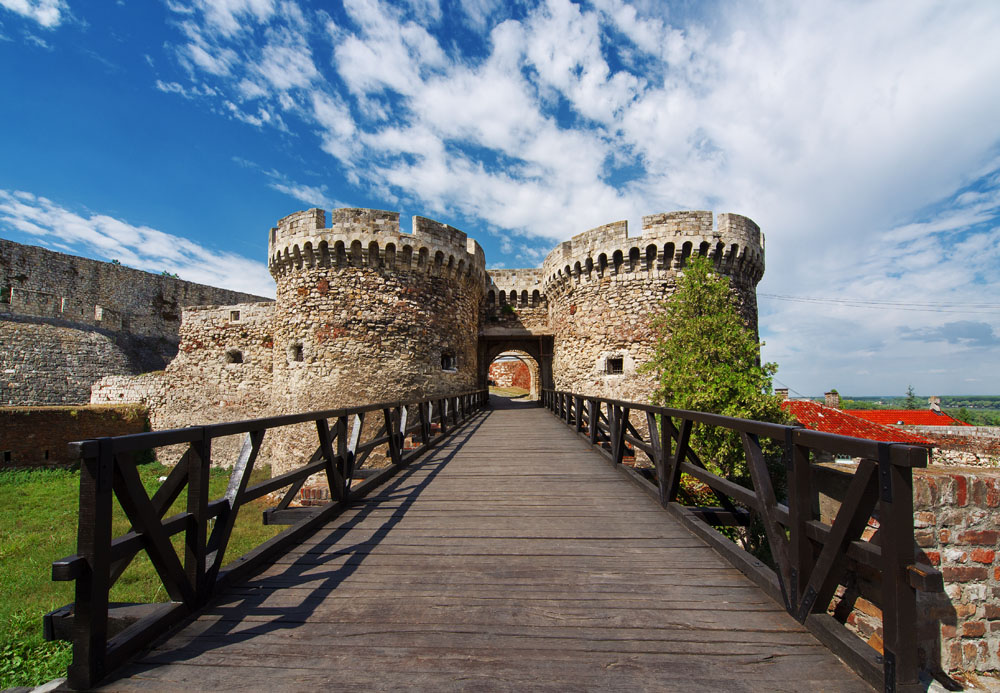
Skadarlija
Is a vintage street, an urban neighborhood and former municipality of Belgrade. It is considered the main bohemian quarter of Belgrade, similar to Paris’ Montmartre.
Since the admission is free, it is estimated that the total number of visitors (foreign, domestic, citizens of Belgrade) is over 2 million yearly.
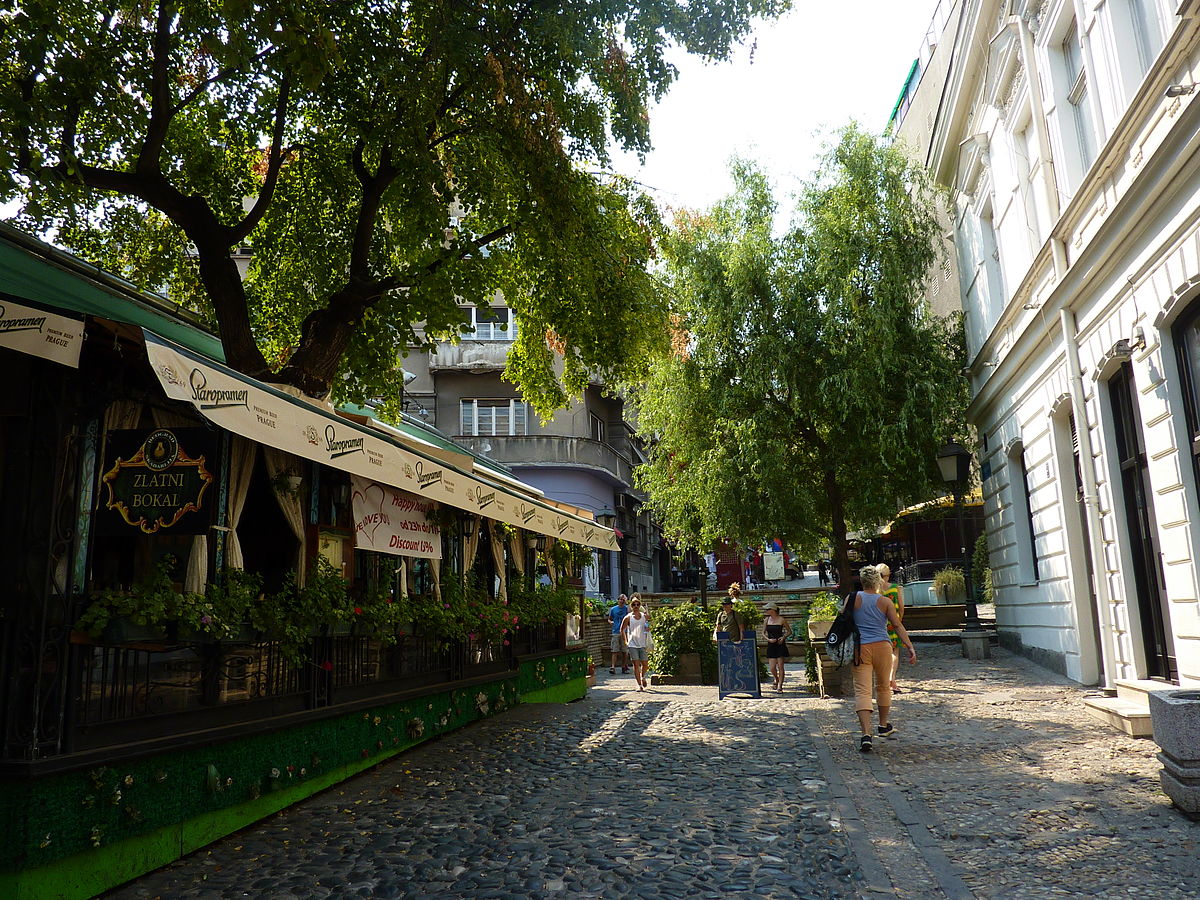
Bajrakli Mosque
The Bajrakli Mosque is a mosque in Belgrade. It is located in Gospodar Jevremova Street in the neighbourhood of Dorćol. It was built around 1575, and is the only mosque in the city out of the 273 that had existed during the time of the Ottoman Empire’s rule of Serbia.During the occupation of Serbia by the Austrians (between 1717 and 1739), it was converted into a Roman Catholic church; but after the Ottomans retook Belgrade, it was returned to its original function.
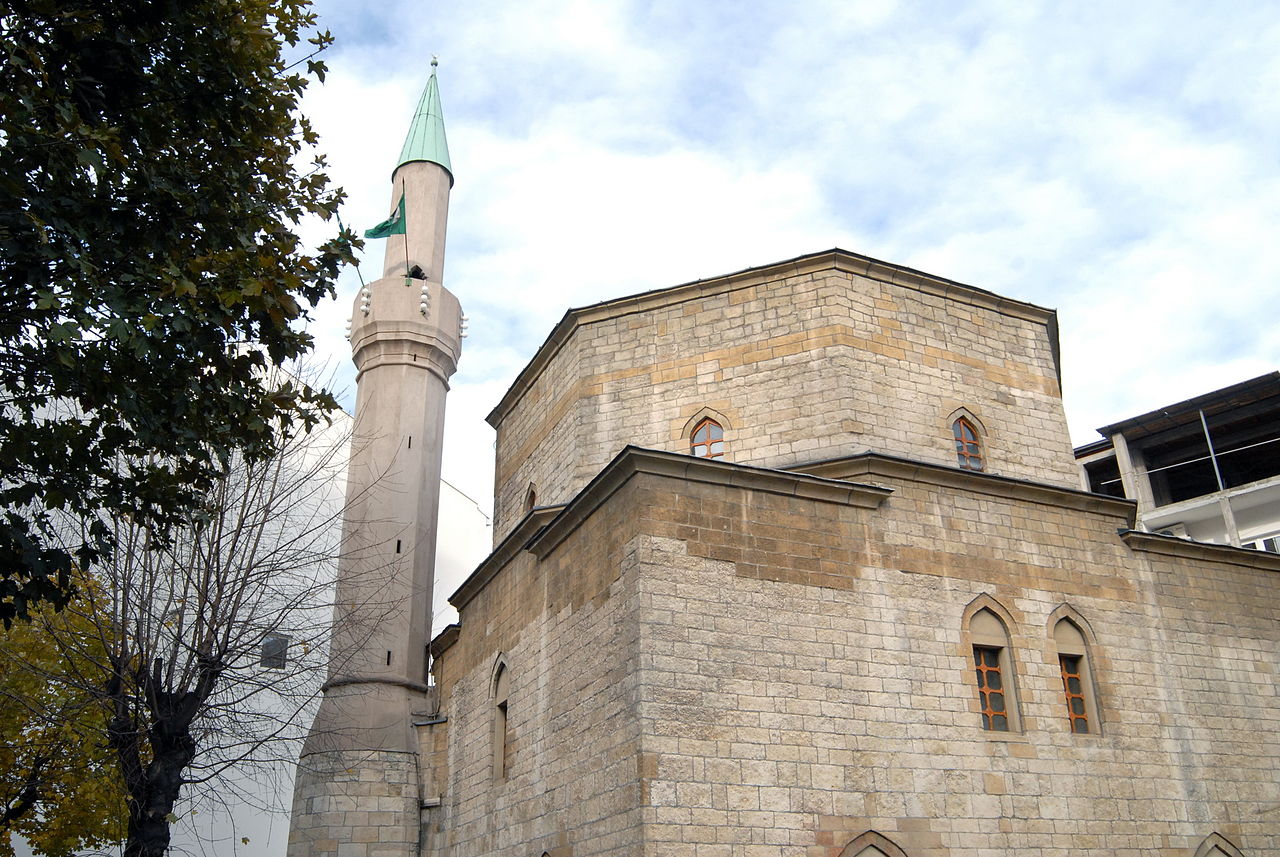
House of the National Assembly of Serbia
The House of the National Assembly of Serbia is the seat of the National Assembly of Serbia. The building is on Nikola Pašić Square in downtown Belgrade, and is a landmark and tourist attraction. Between its completion in 1936 and 2006, it was the seat of the Parliament of Yugoslavia and the Parliament of Serbia and Montenegro.

Church of Saint Sava
The Church of Saint Sava is a Serbian Orthodox church located on the Vračar plateau in Belgrade. It is one of the largest Orthodox churches in the world and ranks among the largest church building in the world.
The church is dedicated to Saint Sava, the founder of the Serbian Orthodox Church and an important figure in medieval Serbia. It is built on the Vračar plateau, on the location where his remains were burned in 1595 by Ottoman Grand Vizier Sinan Pasha. From its location, it dominates Belgrade’s cityscape, and is perhaps the most monumental building in the city.
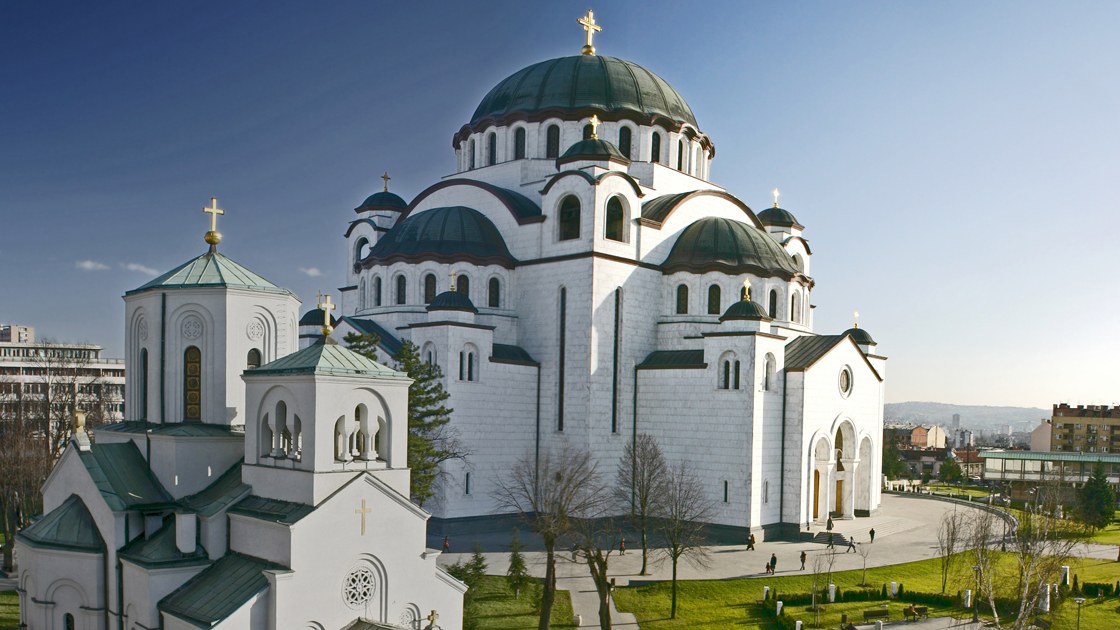
Sava River
The Sava is a river in Central and Southeastern Europe, a right tributary of the Danube. It flows through Slovenia, Croatia, along the northern border of Bosnia and Herzegovina, and through Serbia, discharging into the Danube in Belgrade. The Sava forms the northern border of the Balkan Peninsula, and the southern edge of the Pannonian Plain.
The Sava is 990 kilometres (615 miles) long. It is the greatest tributary of the Danube by volume of water, and second-largest after Tisza in terms of catchment area and length. The Sava is one of the longest rivers in Europe and among a handful of European rivers of that length that do not drain directly into a sea.
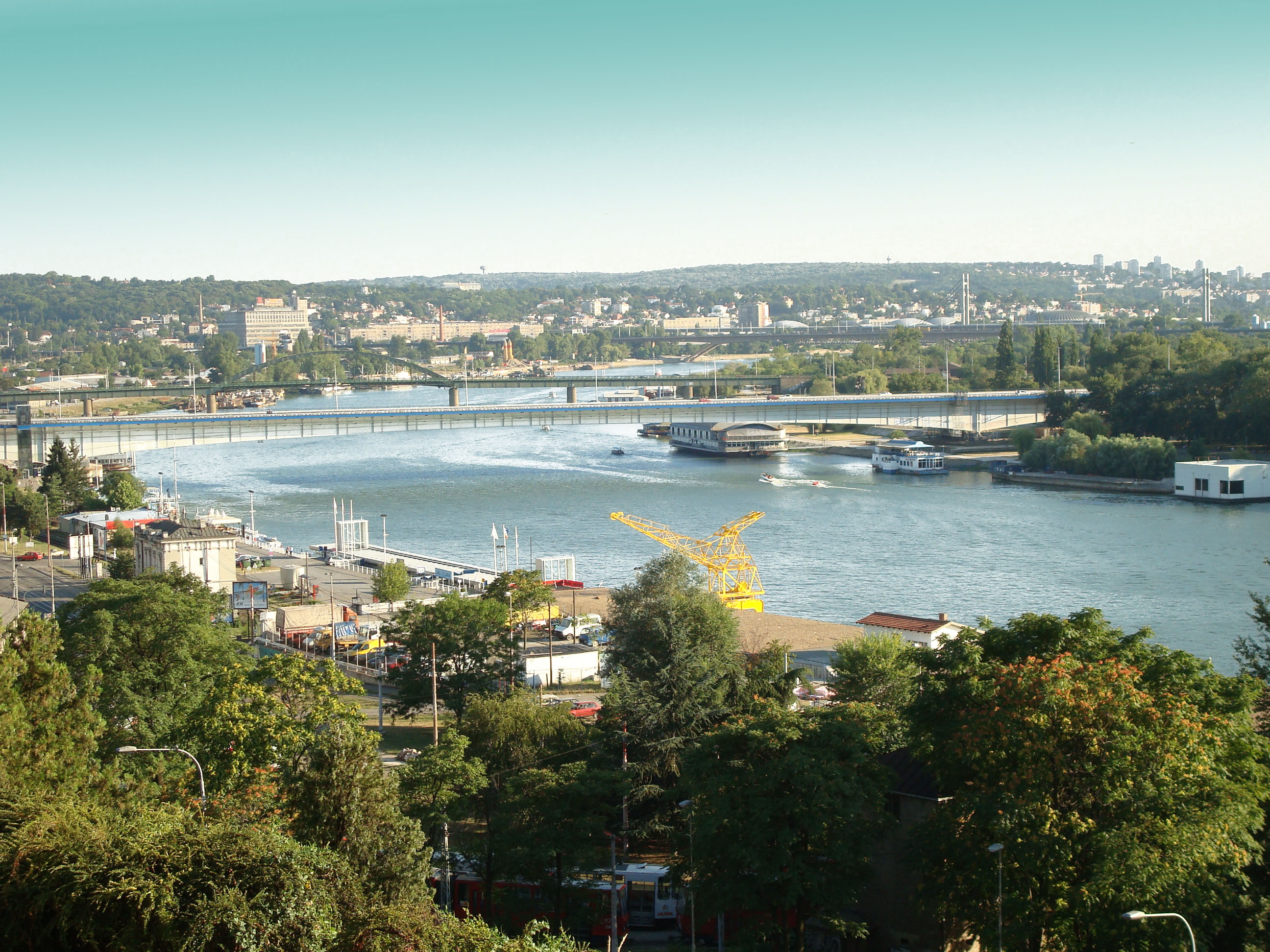
BUDAPEST
Budapest is the capital and by far the most populous city of Hungary and one of the largest cities in the European Union. With an estimated 2016 population of 1,759,407 distributed over a land area of about 525 square kilometers, Budapest is also one of the most densely populated major cities in the EU. Budapest is both a city and county, and forms the centre of the Budapest metropolitan area, which has an area of 7,626 square kilometers and a population of 3,303,786, comprising 33 percent of the population of Hungary.
Budapest is a leading global city with strengths in commerce, finance, media, art, fashion, research, technology, education, and entertainment. Over 40 colleges and universities are located in Budapest, including the Eötvös Loránd University, Semmelweis University and Budapest University of Technology and Economics, which have been ranked among the top 500 in the world.Opened in 1896, the city’s subway system, the Budapest Metro, serves 1.27 million, while the Budapest Tram Network serves 1.08 million passengers daily.
The history of Budapest began with Aquincum, originally a Celtic settlement that became the Roman capital of Lower Pannonia. Hungarians arrived in the territory in the 9th century. Their first settlement was pillaged by the Mongols in 1241. The re-established town became one of the centres of Renaissance humanist culture by the 15th century. Following the Battle of Mohács and nearly 150 years of Ottoman rule, the region entered a new age of prosperity, and Budapest became a global city with the unification of Buda and Óbuda on the west bank with Pest on the east bank on November 17, 1873. Budapest also became the co-capital of the Austro-Hungarian Empire, a great power that dissolved in 1918, following World War I. The city was the focal point of the Hungarian Revolution of 1848, the Battle of Budapest in 1945, and the Hungarian Revolution of 1956.
Hungarian Parliament
Hungarian Parliament Building also known as the Parliament of Budapest for being located in that city, is the seat of the National Assembly of Hungary, a notable landmark of Hungary and a popular tourist destination of Budapest. It lies in Lajos Kossuth Square, on the bank of the Danube. It is currently the largest building in Hungary and still the tallest building in Budapest.
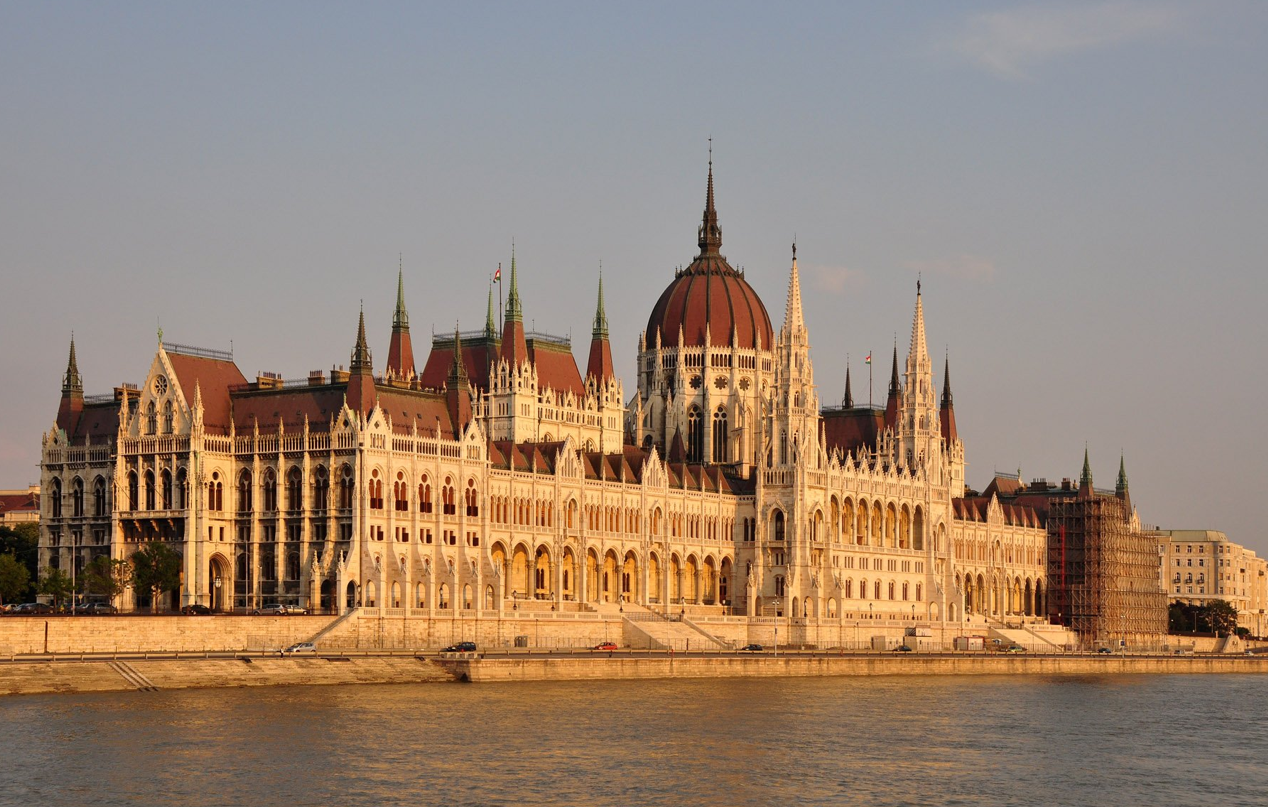
Royal Castle
Buda Castle is the historical castle and palace complex of the Hungarian kings in Budapest. It was first completed in 1265, but the massive Baroque palace today occupying most of the site was built between 1749 and 1769. The complex in the past was referred to as either the Royal Palace or the Royal Castle.
Buda Castle sits on the south tip of Castle Hill, bounded on the north by what is known as the Castle District, which is famous for medieval, Baroque and 19th-century houses, churches and public buildings. The hill is linked to Clark Ádám Square and the Széchenyi Chain Bridge by the Castle Hill Funicular. The castle is a part of the Budapest World Heritage Site, so declared in 1987.
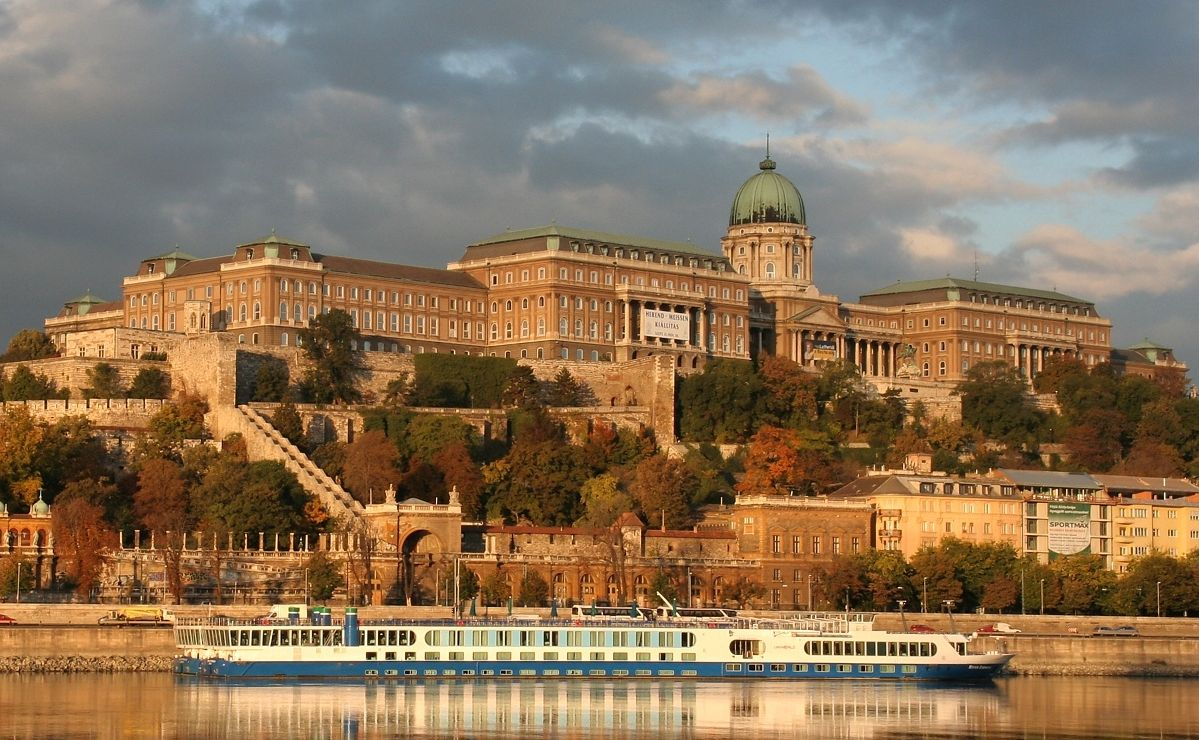
Fisherman’s Bastion
Fisherman’s Bastion is a terrace in neo-Gothic and neo-Romanesque style situated on the Buda bank of the Danube, on the Castle hill in Budapest, around Matthias Church. It was designed and built between 1895 and 1902 on the plans of Frigyes Schulek. Construction of the bastion destabilised the foundations of the neighbouring 13th century Dominican Church which had to be pulled down. Between 1947–48, the son of Frigyes Schulek, János Schulek, conducted the other restoration project after its near destruction during World War II.
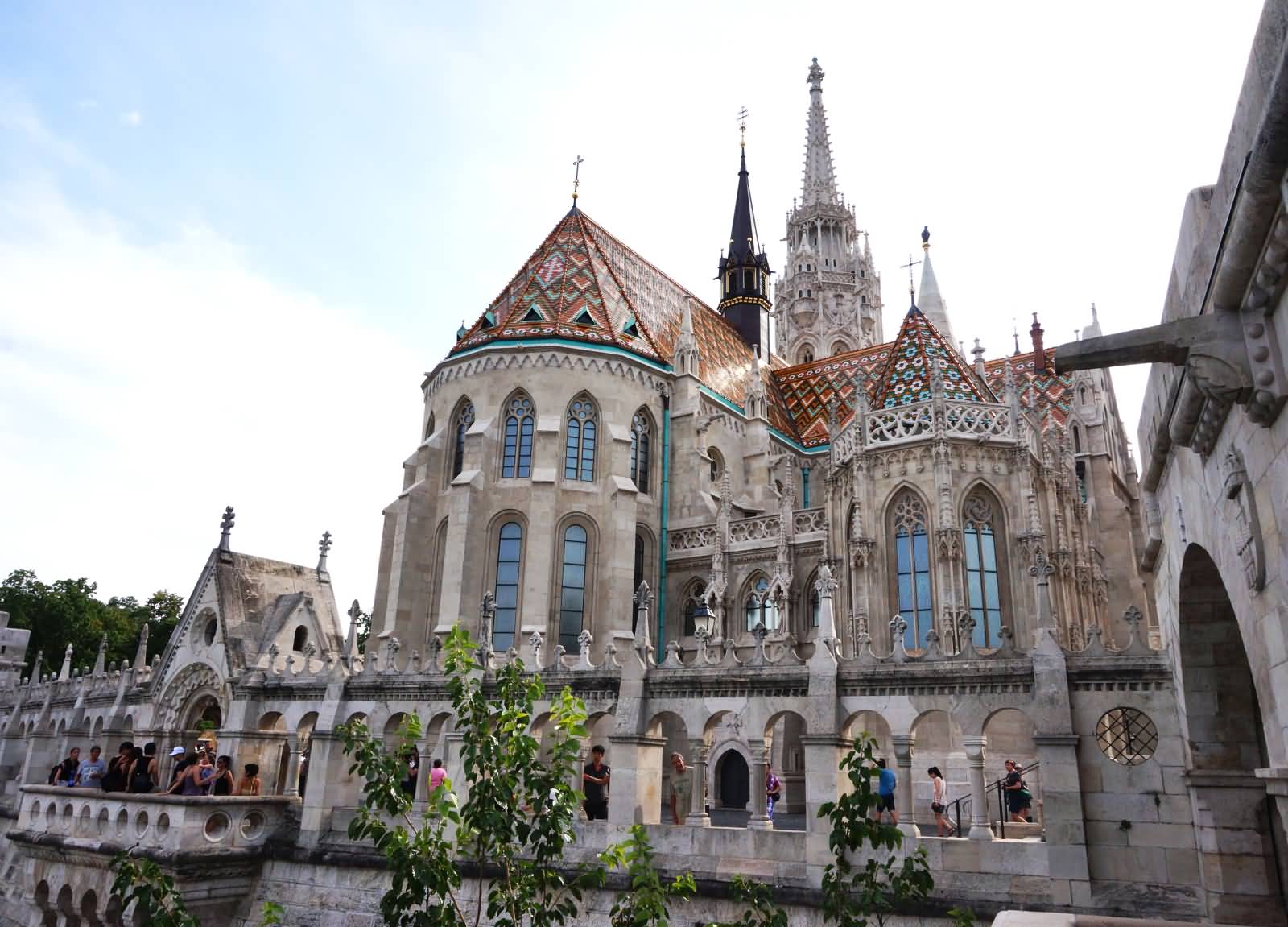
Matthias Church
Matthias Church is a Roman Catholic Church in front of the Fisherman’s Bastion at the heart of Buda’s Castle District. According to church tradition, it was originally built in Romanesque style in 1015, although no archaeological remains exist. The current building was constructed in the florid late Gothic style in the second half of the 14th century and was extensively restored in the late 19th century.
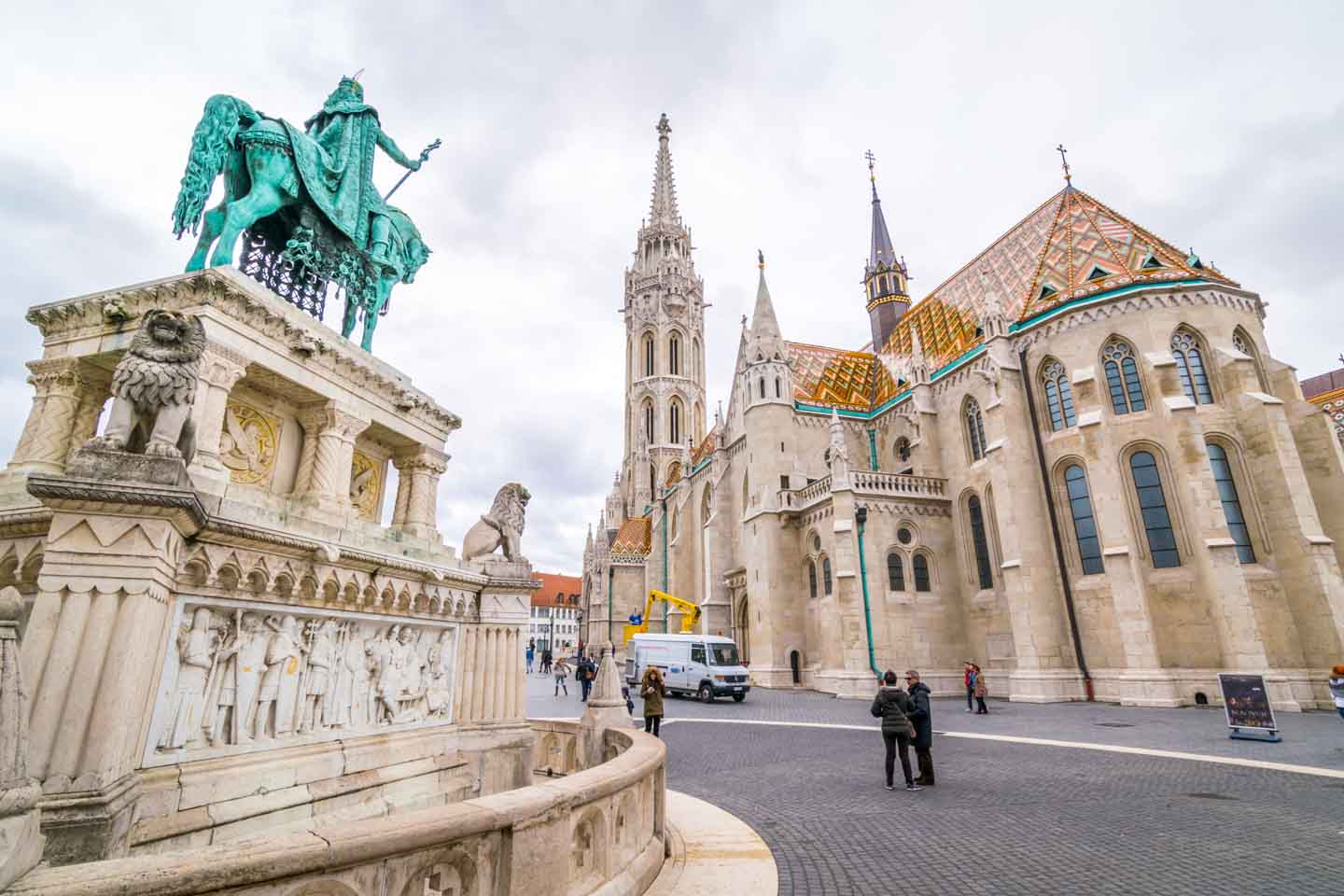
Elisabeth Bridge
Elisabeth Bridge is the third newest bridge of Budapest, Hungary, connecting Buda and Pest across the River Danube. The bridge is situated at the narrowest part of the Danube in the Budapest area, spanning only 290 m. It is named after Elisabeth of Bavaria, a popular queen and empress of Austria-Hungary, who was assassinated in 1898. Today, her large bronze statue sits by the bridge’s Buda side connection in the middle of a small garden.
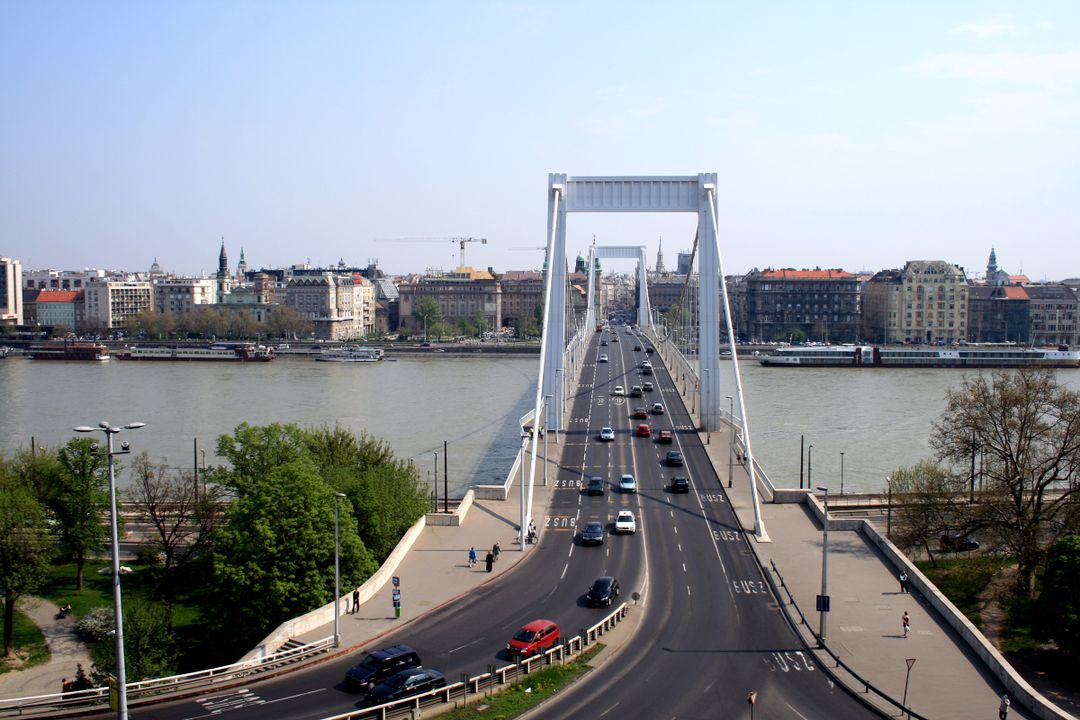
Margaret Bridge
Margaret Bridge or Margit híd is a three-way bridge in Budapest, Hungary, connecting Buda and Pest across the Danube and linking Margaret Island to the banks. It is the second-northernmost and second-oldest public bridge in Budapest. This bridge leads up to Margaret Island, its two parts enclosing 165 degrees with each other at the embranchment towards the island is 637.5 metres in length and 25 metres in width.
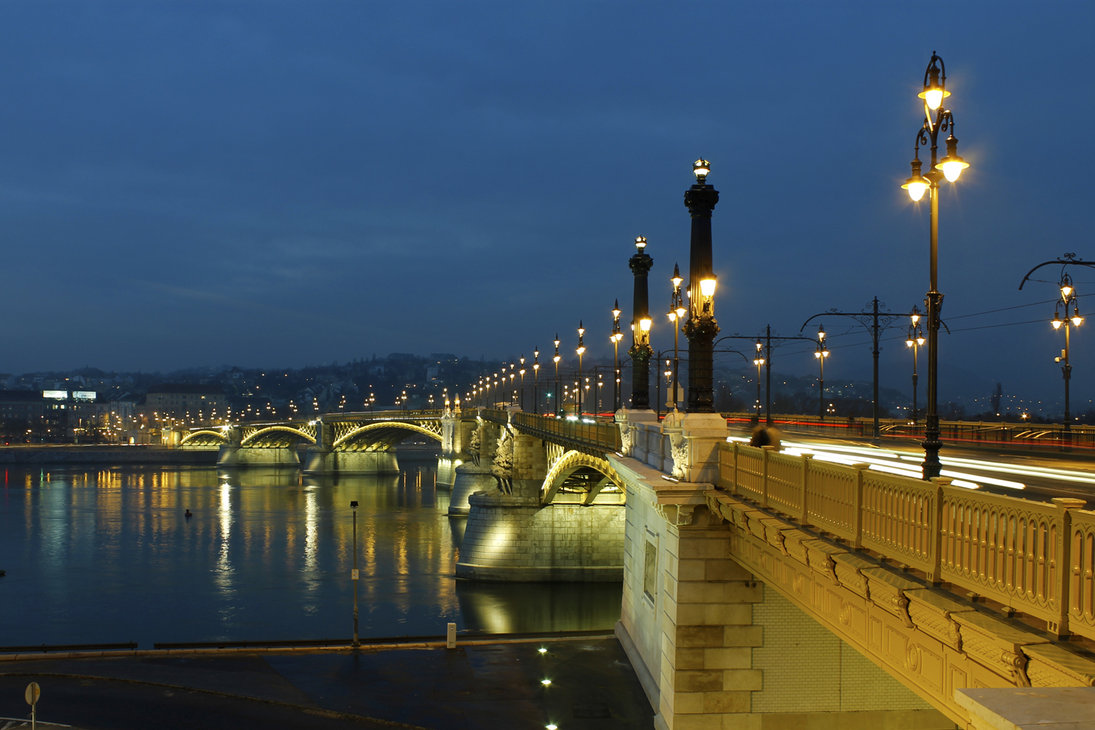
Heroe’s Square
“Hősök tere is one of the major squares in Budapest, noted for its iconic statue complex featuring the Seven Chieftains of the Magyars and other important Hungarian national leaders, as well as the Tomb of the Unknown Soldier. The square lies at the outbound end of Andrássy Avenue next to City Park (Városliget). It hosts the Museum of Fine Arts and the Műcsarnok. The square has played an important part in contemporary Hungarian history and has been a host to many political events, such as the reburial of Imre Nagy in 1989. The sculptures were made by sculptor Zala György from Lendava.
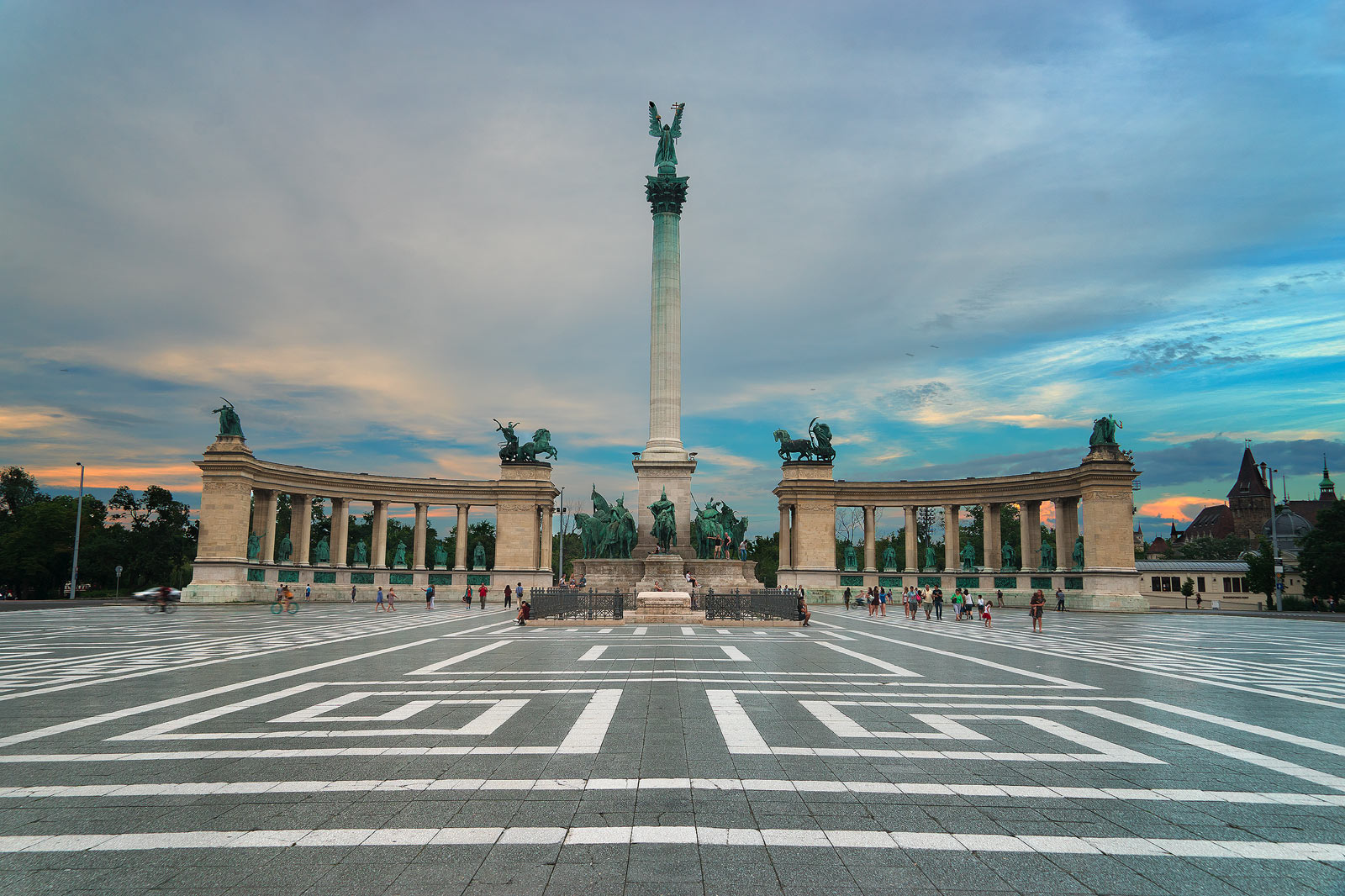
KRAKOW
One of the oldest cities in Poland, Krakow dates back to the 7th century and for nearly five centuries, served as the capital of the Crown of the Kingdom of Poland. The city has an almost mythical feel to it, and its rich history can be seen throughout, from the historic Old Town with its cobbled streets and little squares, to the glorious churches that soar high to form part of Krakow’s legendary skyline. The striking St.
Mary’s Basilica, with its brick façade and delightful interior, hails back to the 13th century and is unique due to its two towers of different heights. Cultural buffs will enjoy the Wawel Royal Castle which contains five separate sections showcasing the political and cultural history of Poland. A historical memorial, dedicated to the Polish/American military hero, Tadeusz Kosciuszko has been erected in the form of a mound and presents spectacular views over the city from the top. The tragic story of Krakow’s Jewish population is told at various locations, from Schindler’s Factory which houses an impressive interactive museum, to the Galicia Jewish Museum and the second Jewish Museum housed in the 15th century Old Synagogue.
Basic Facts
Country Name: Poland
City Population: 754.056
Quick Tip: The Old Town of Krakow encloses six thousand historic sites! Most of these aren’t apparent at first glance but are rather hidden behind the closed doors of churches and galleries or underground in museums!
Main Square
Main Square or Main Market Square is like the epicenter of Krakow. It was designed in 1257 and has remained more or less the same since then in terms of the layout and structure. This 200-square meter area is considered one of Europe’s biggest medieval squares. There is a lot that has happened at the Main Market Square over the centuries, from friendly processions and festivals to Christmas crib competitions to a Nazi rally during World War II.
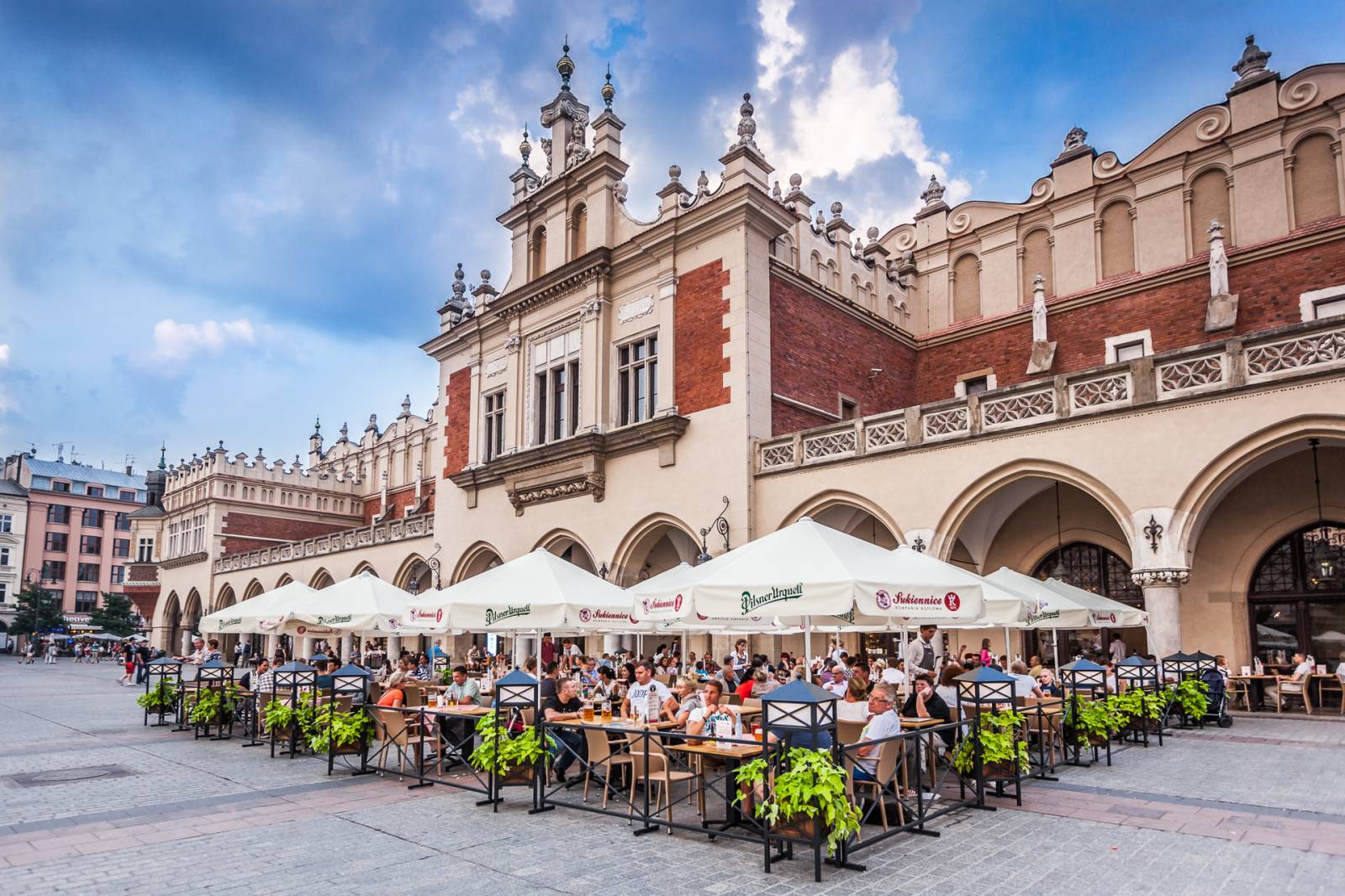
St. Mary’s Basilica
St. Mary’s Basilica in Krakow, also known as the Church of Our Lady Assumed into Heaven, is located next to the Old Town district’s famous Main Market Square. The church was first constructed in the 13th century and was later rebuilt in the 14th century. The rebuilt church follows the Gothic style of architecture with its two beautiful towers.
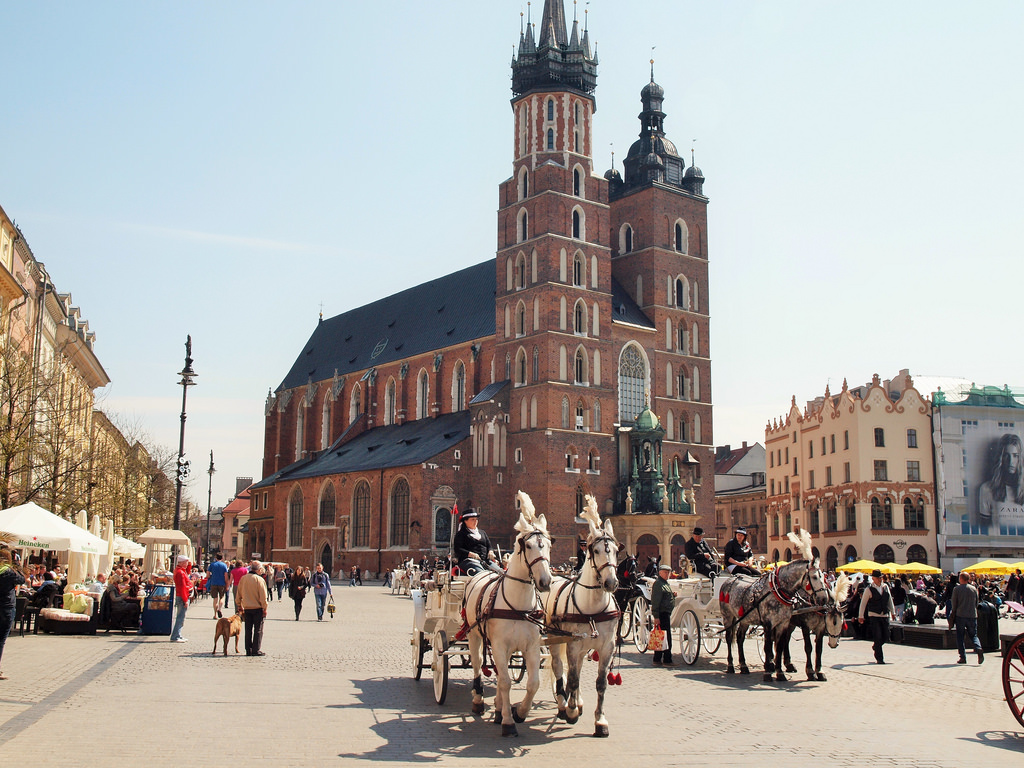
Wawel Cathedral
The Wawel Cathedral was the coronation site of Polish monarchs and remains Poland’s most important national sanctuary. Thanks to its 1000-year-old history and numerous treasures the Krakow cathedral is arguably the most interesting place in the whole country, with the adjacent Wawel Royal Castle being the close second. Its present 14th-century walls shelter a great variety of top-class objects of art, from Gothic to Renaissance to Baroque to Classicist to Modern. It is also the burial ground of most Polish royalty as well as the greatest national heroes, two poets, four saints and countless Krakow bishops.



